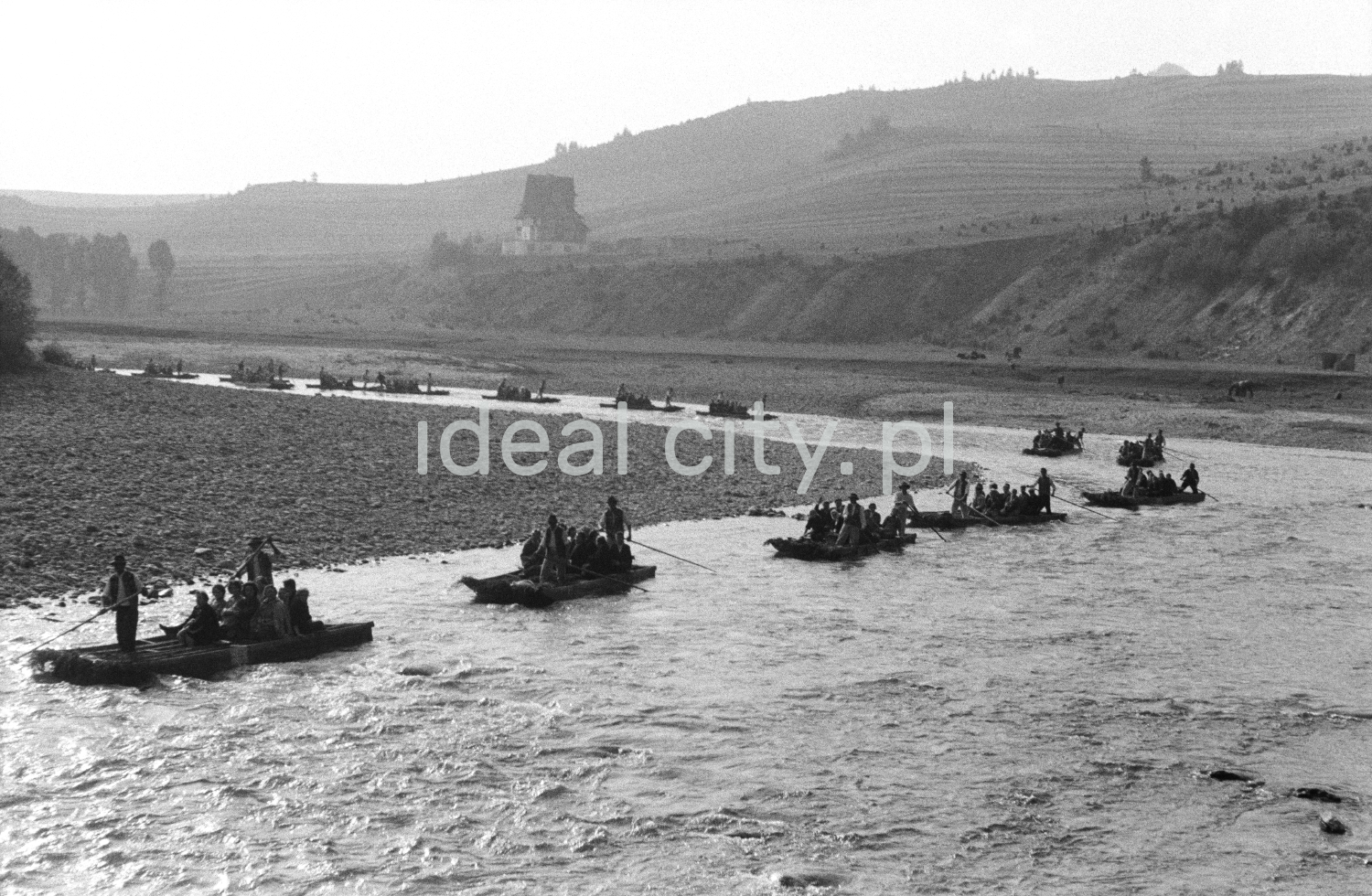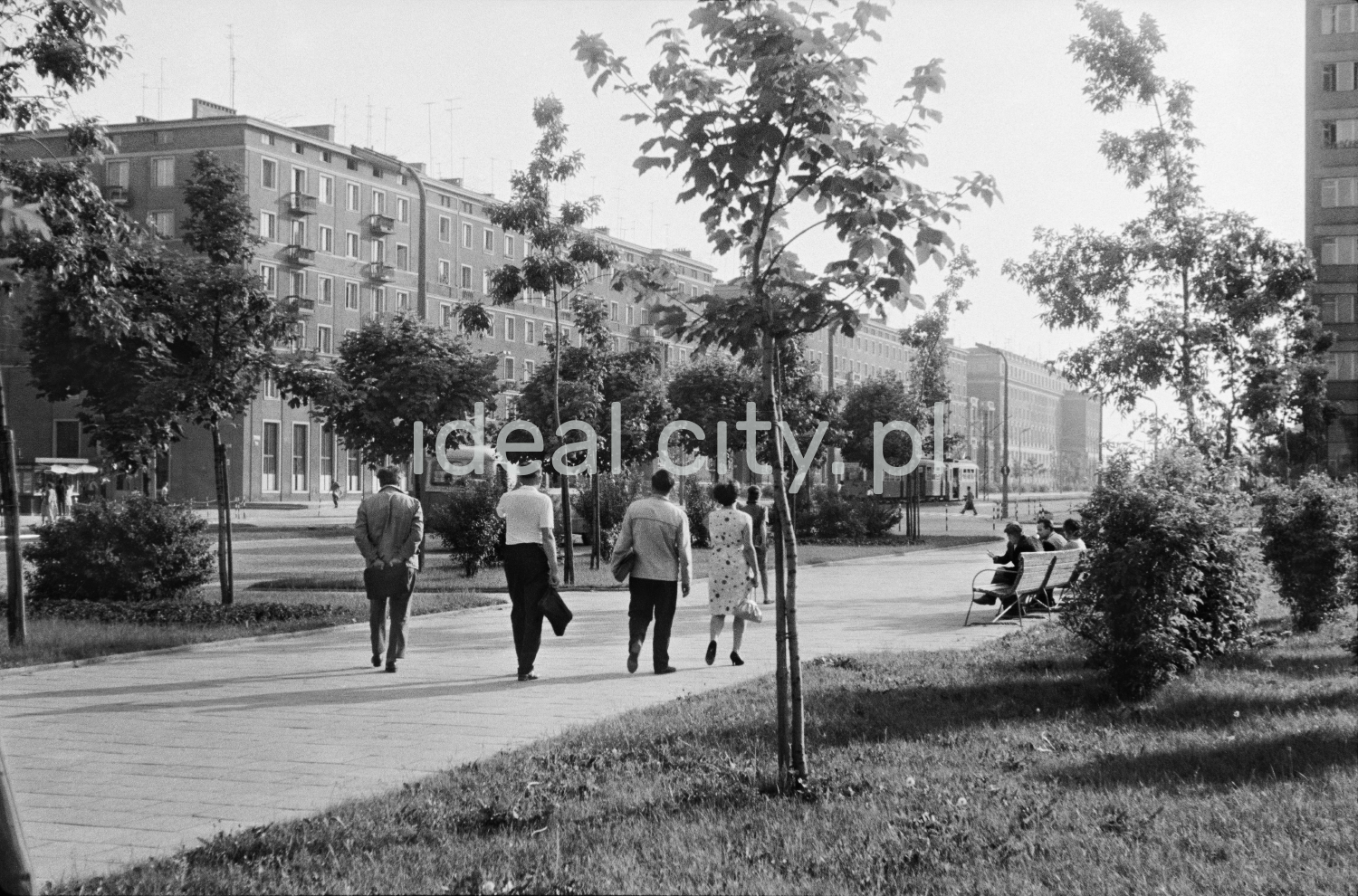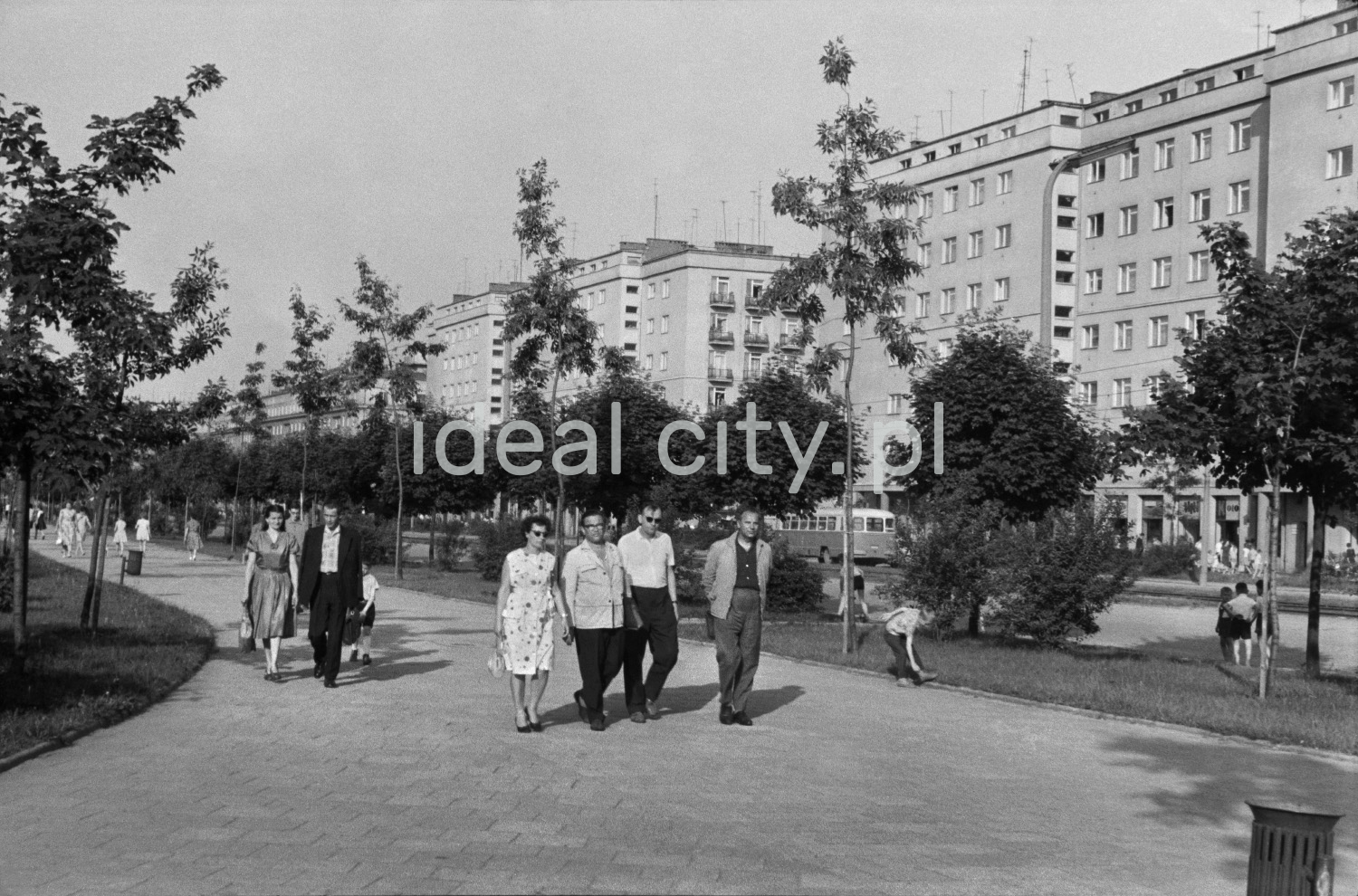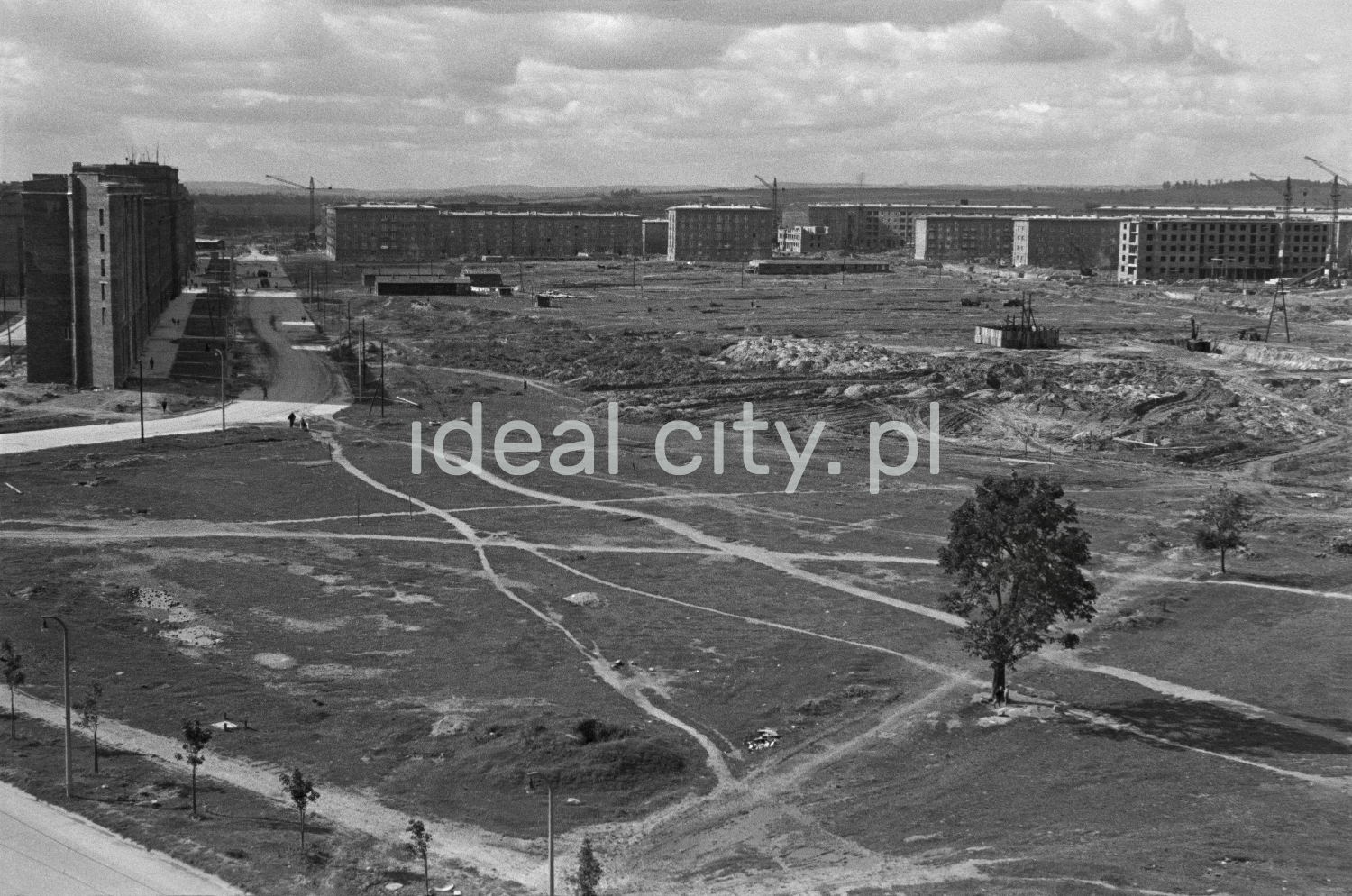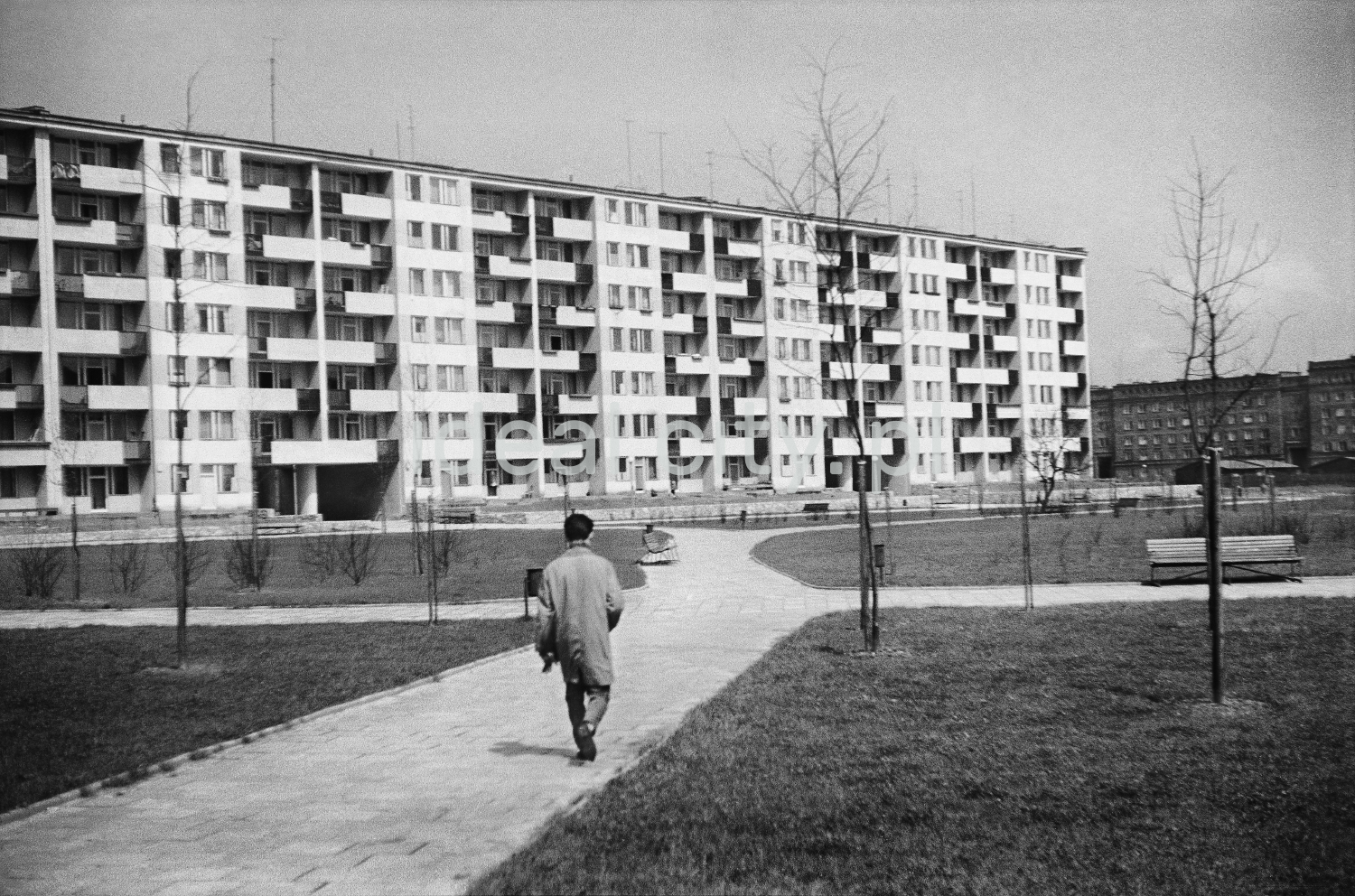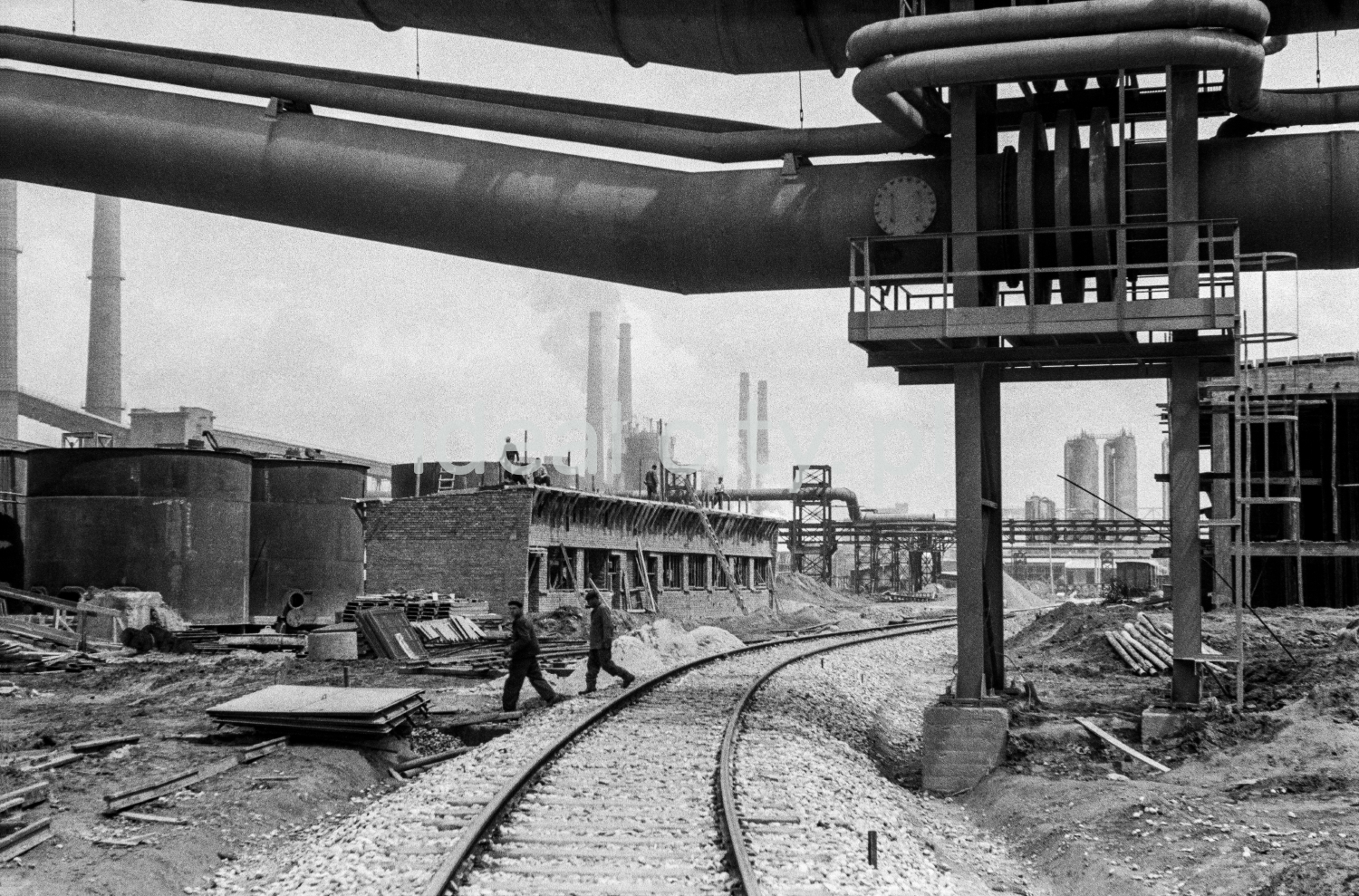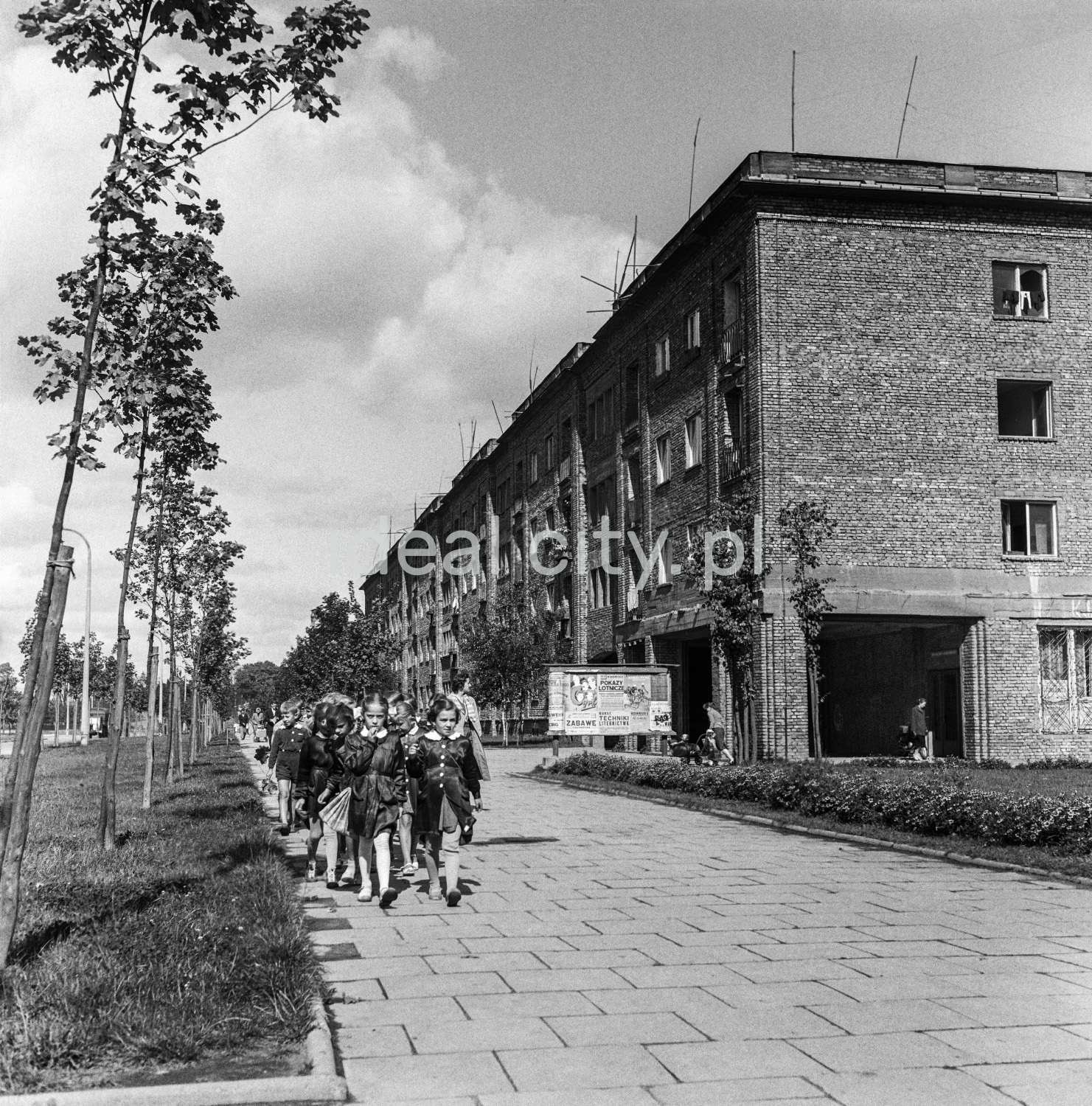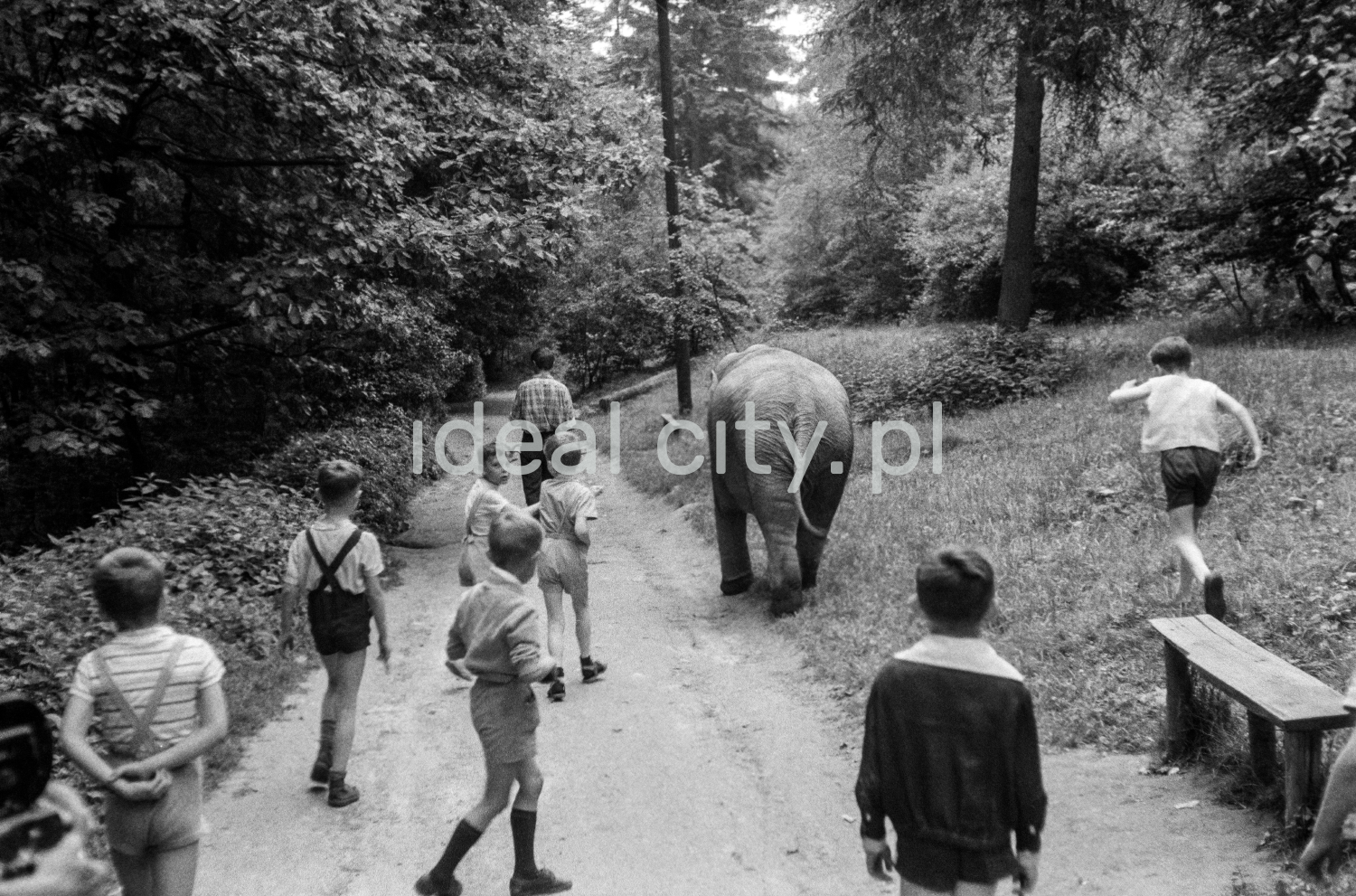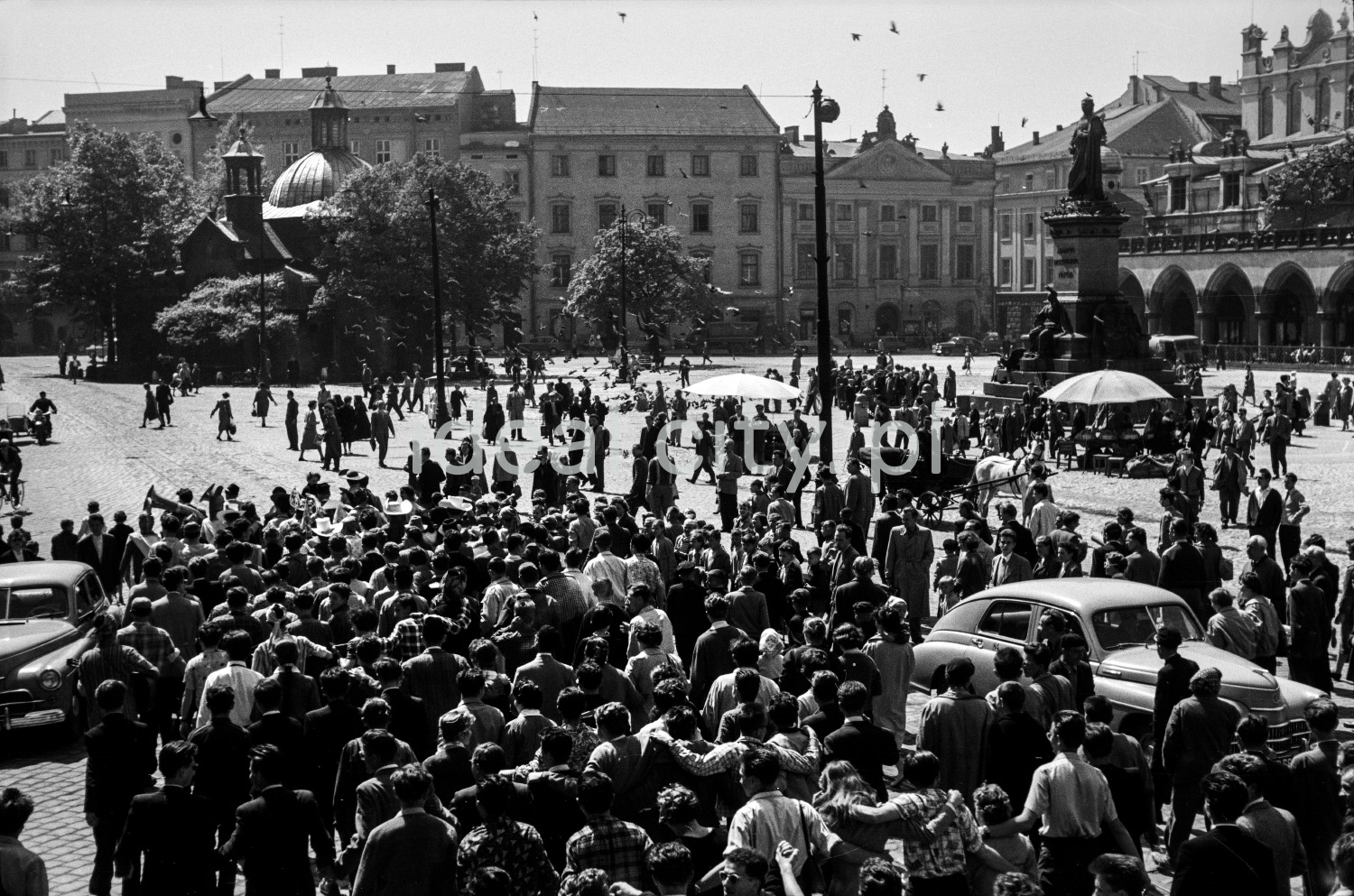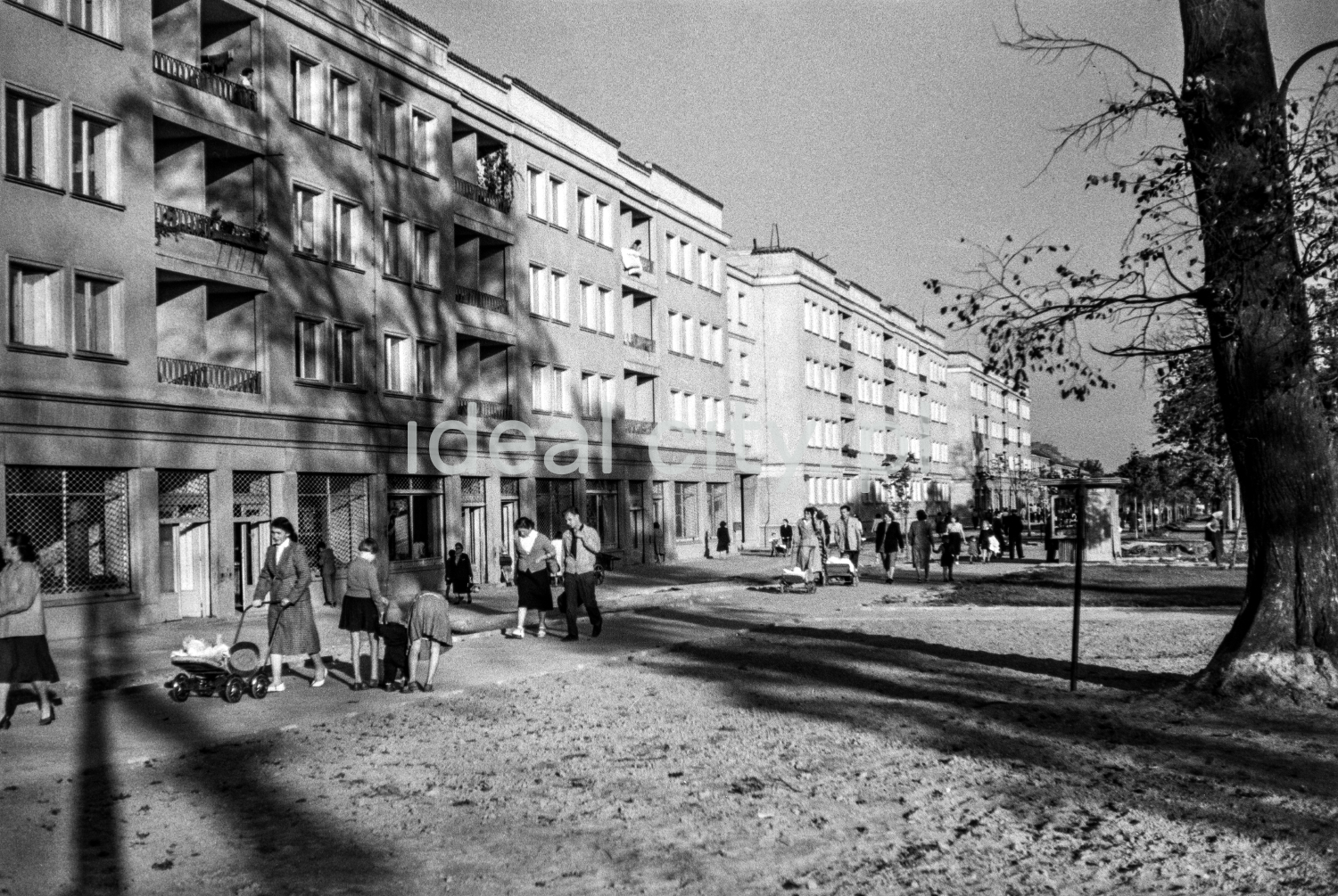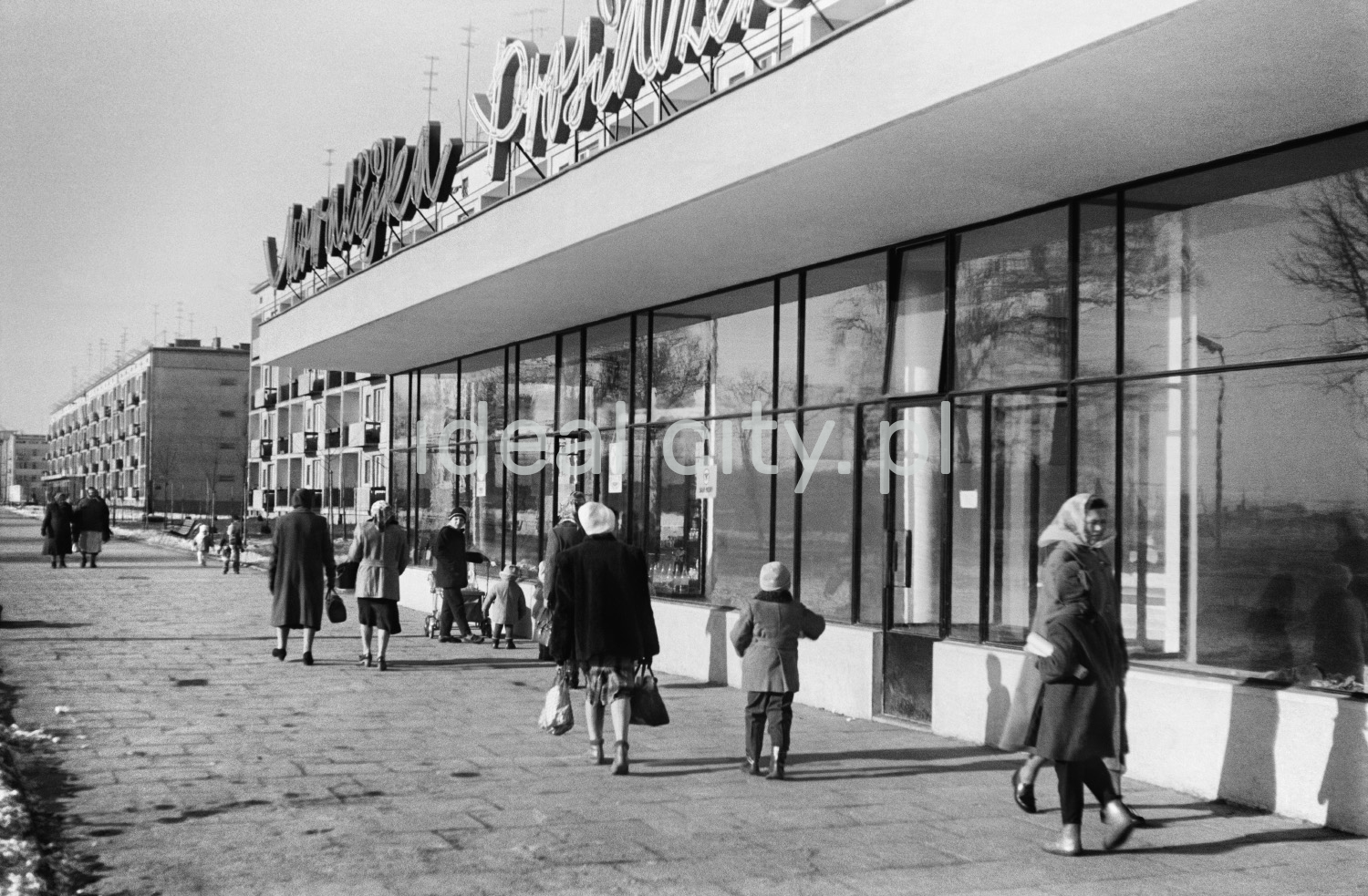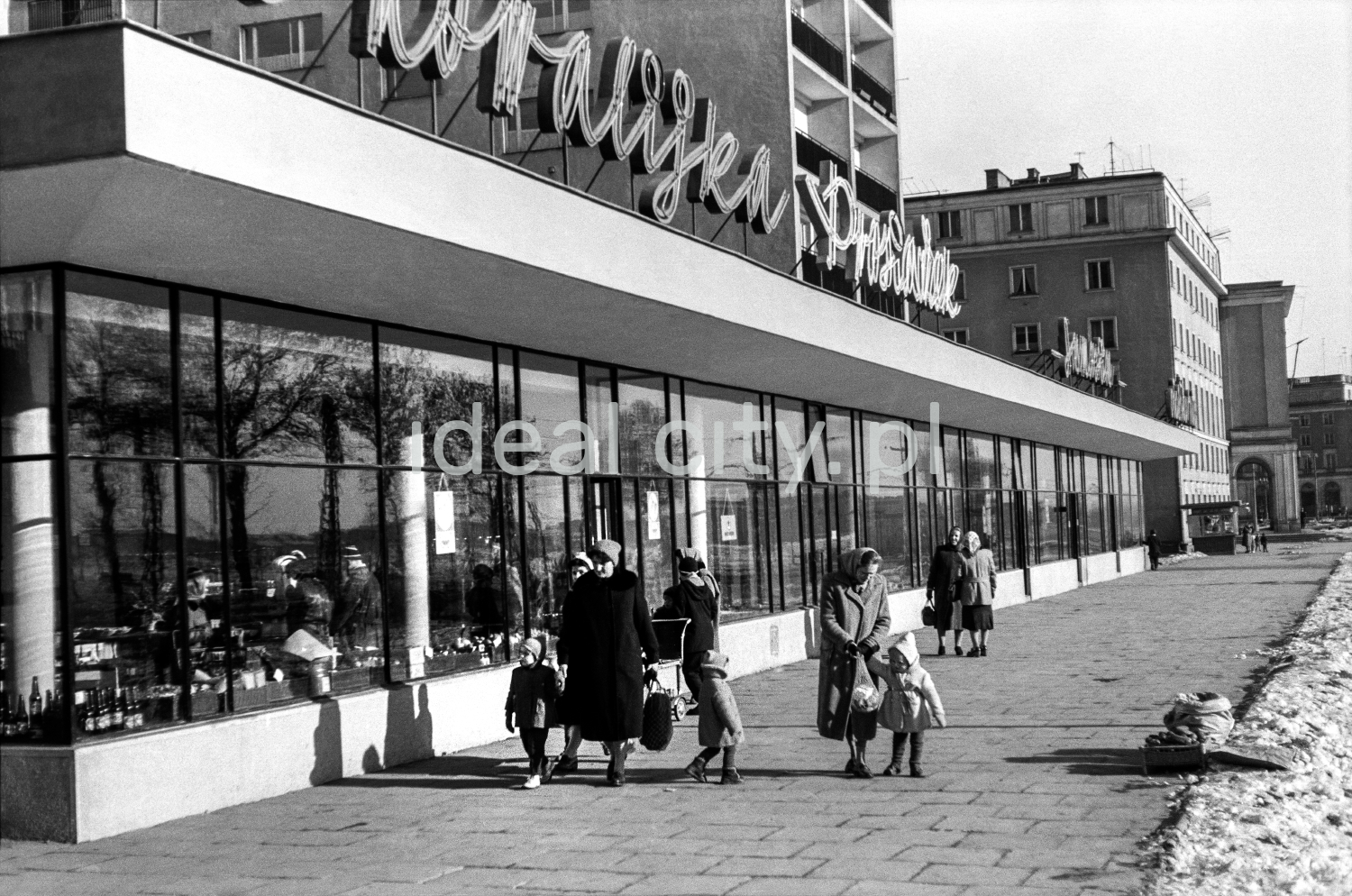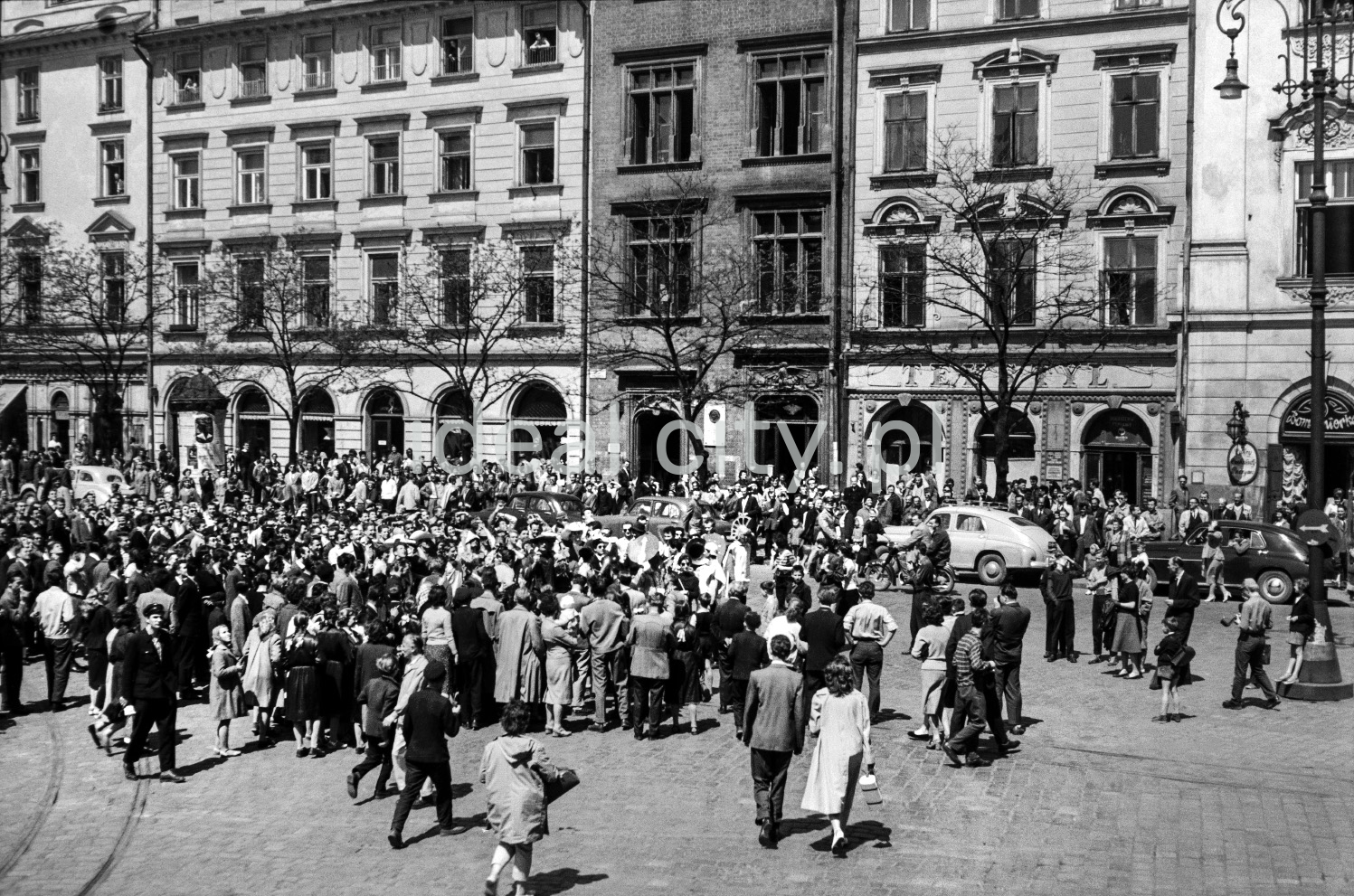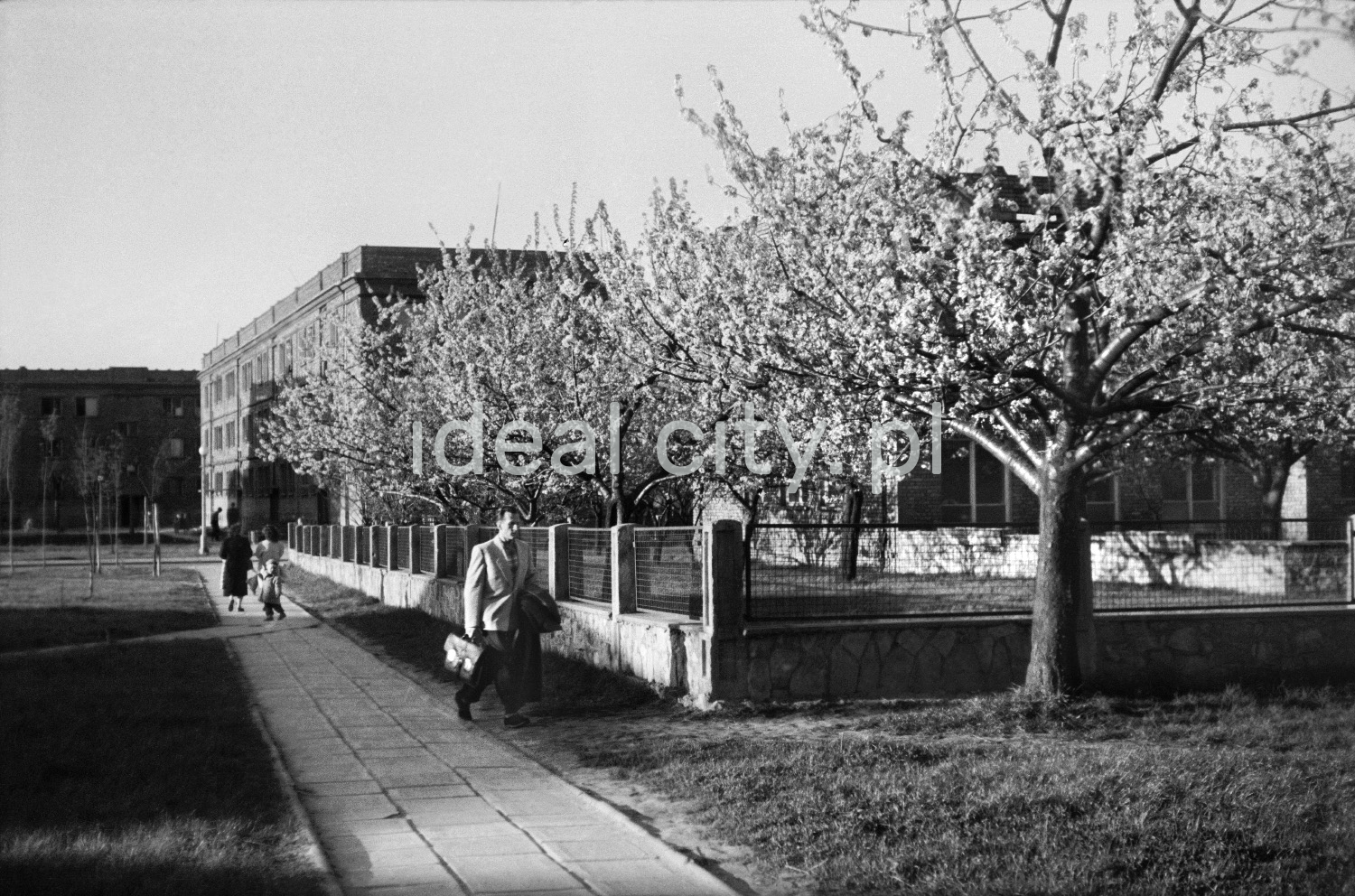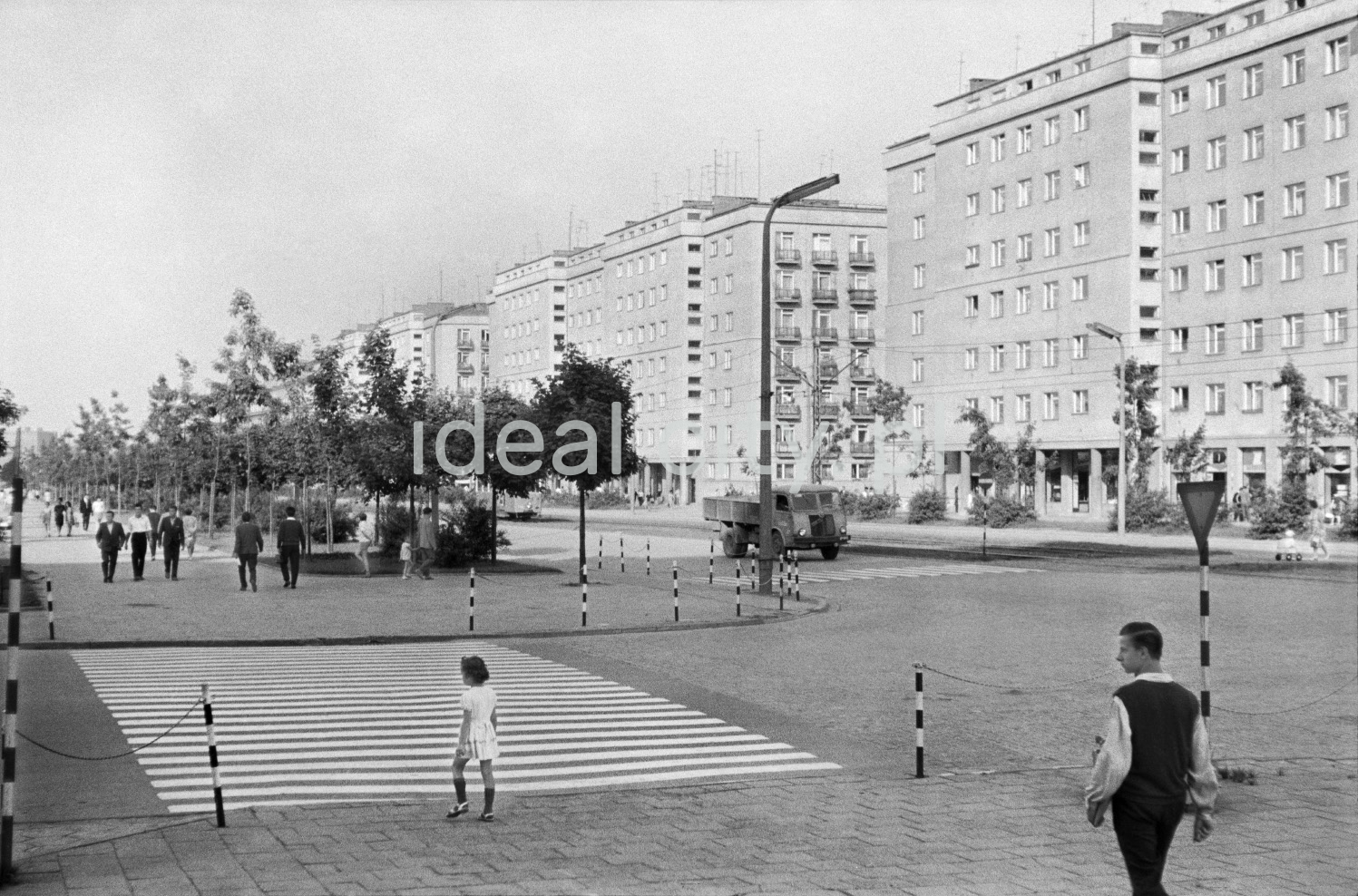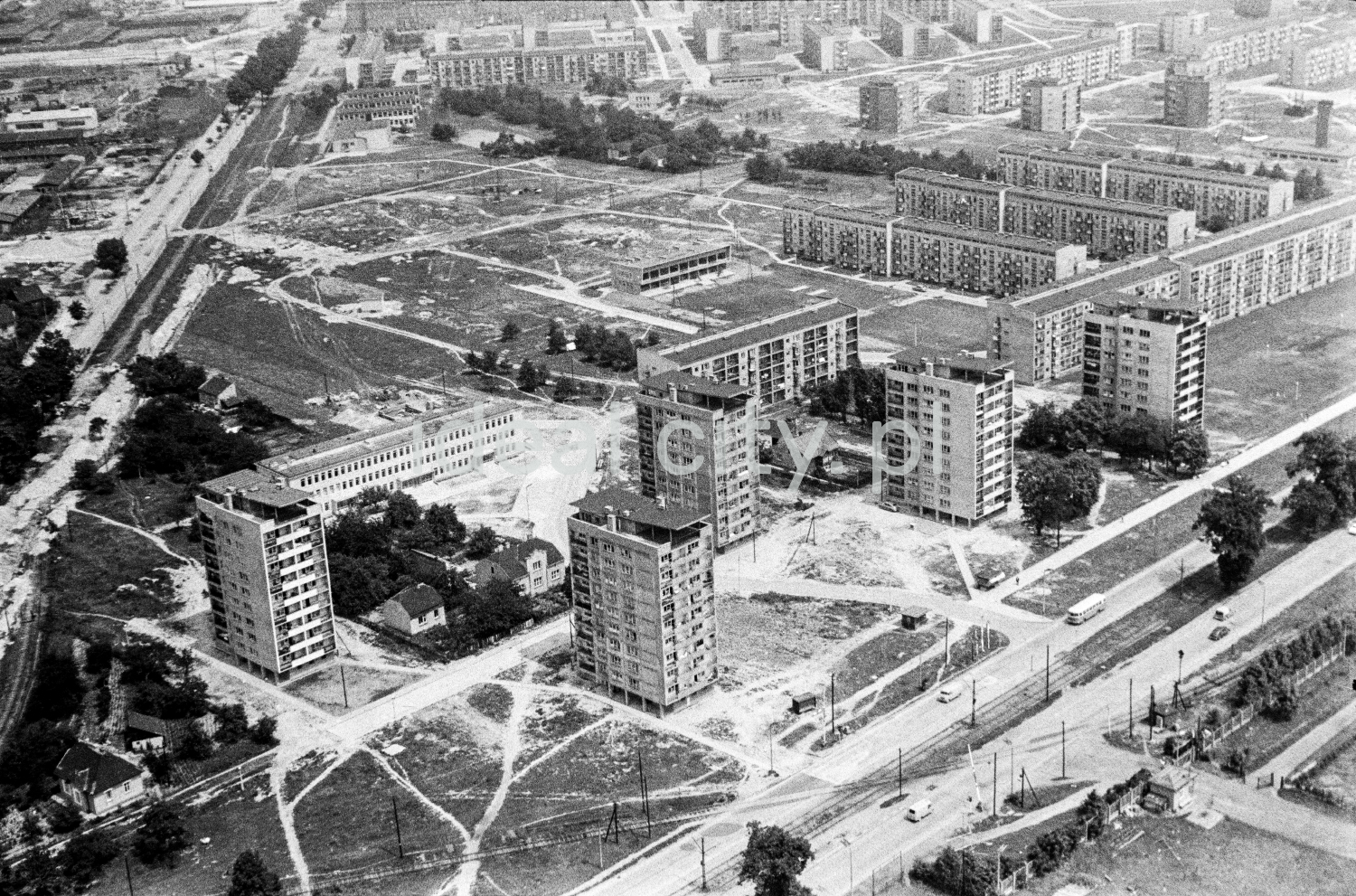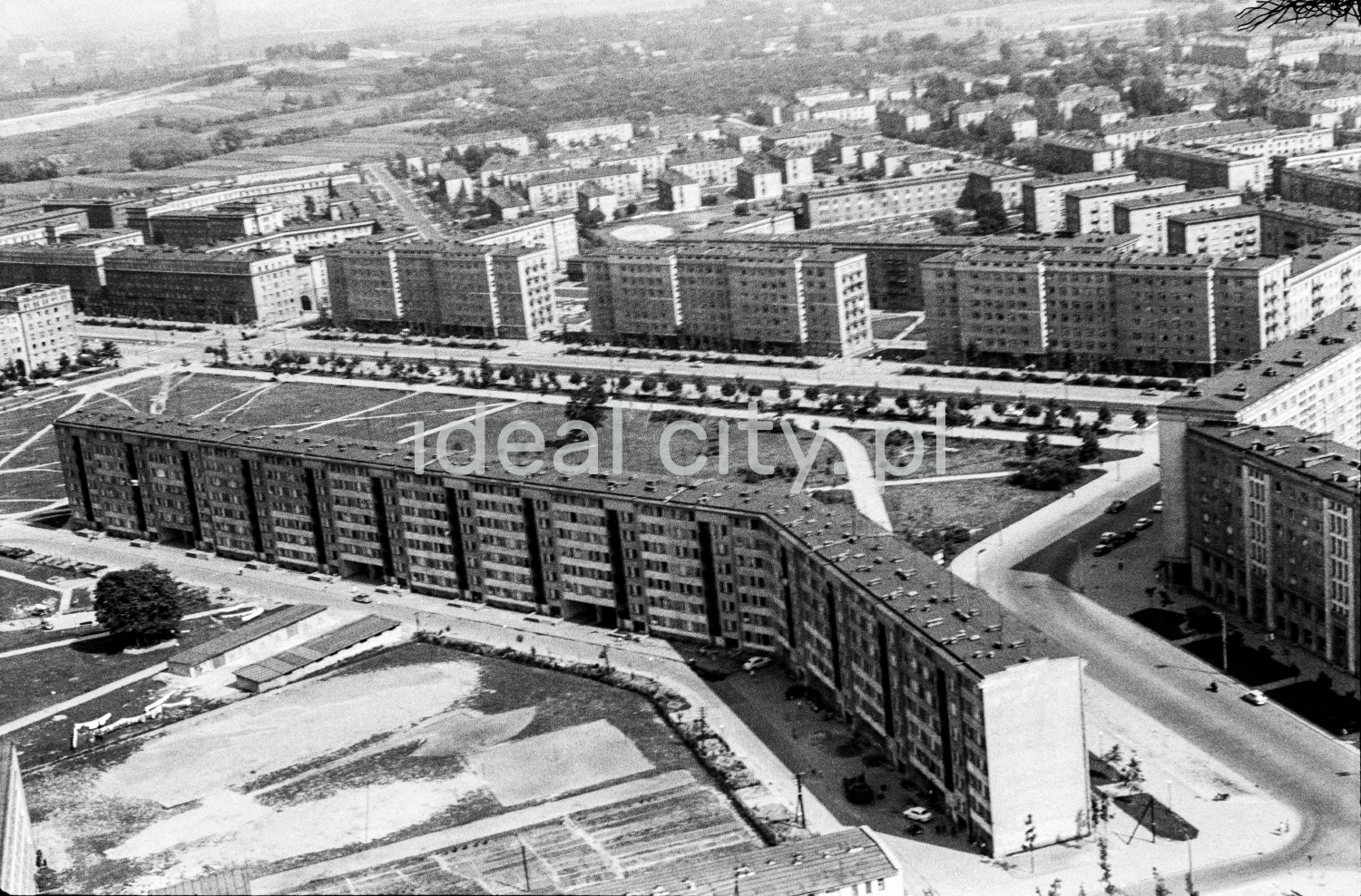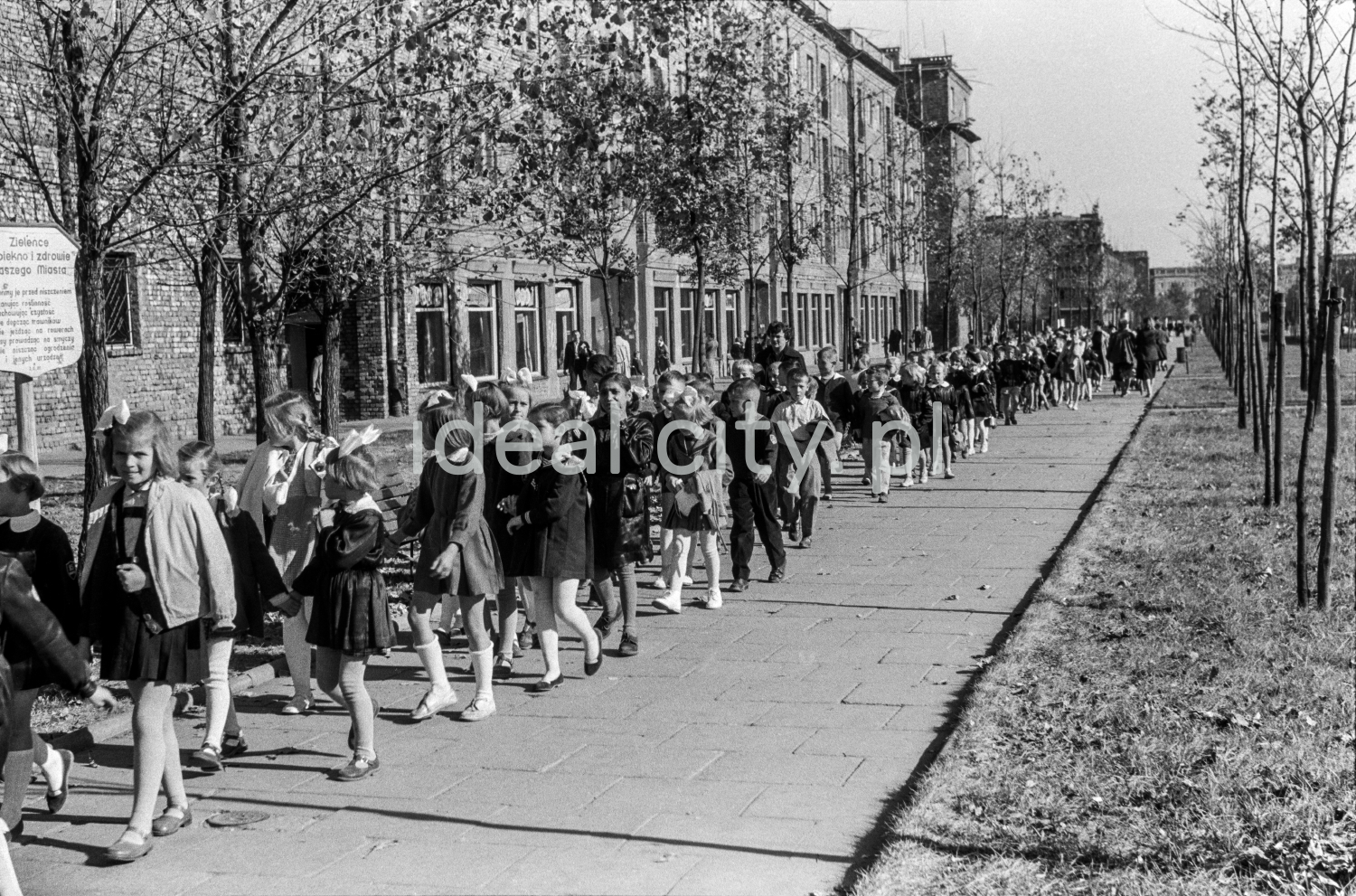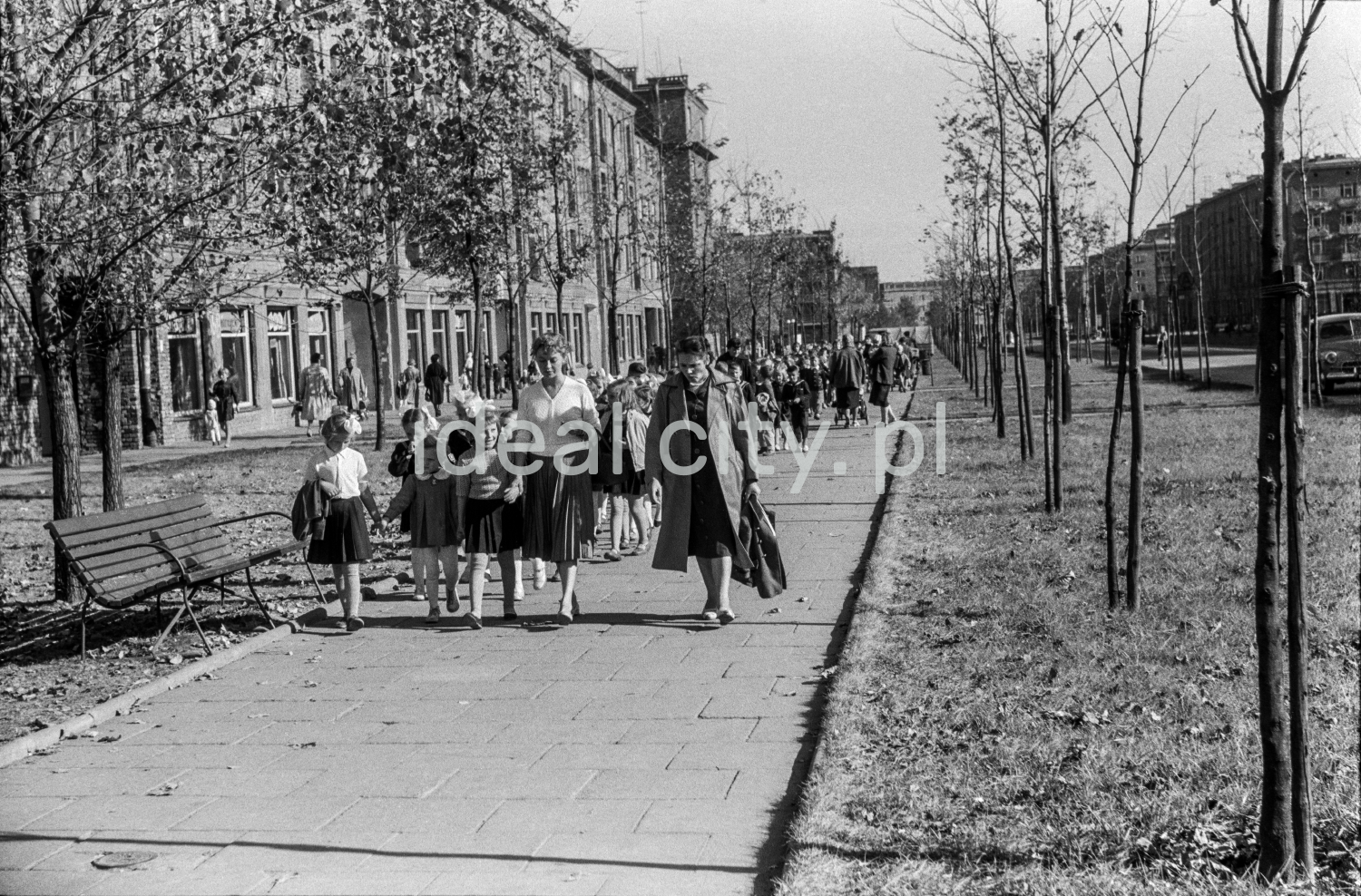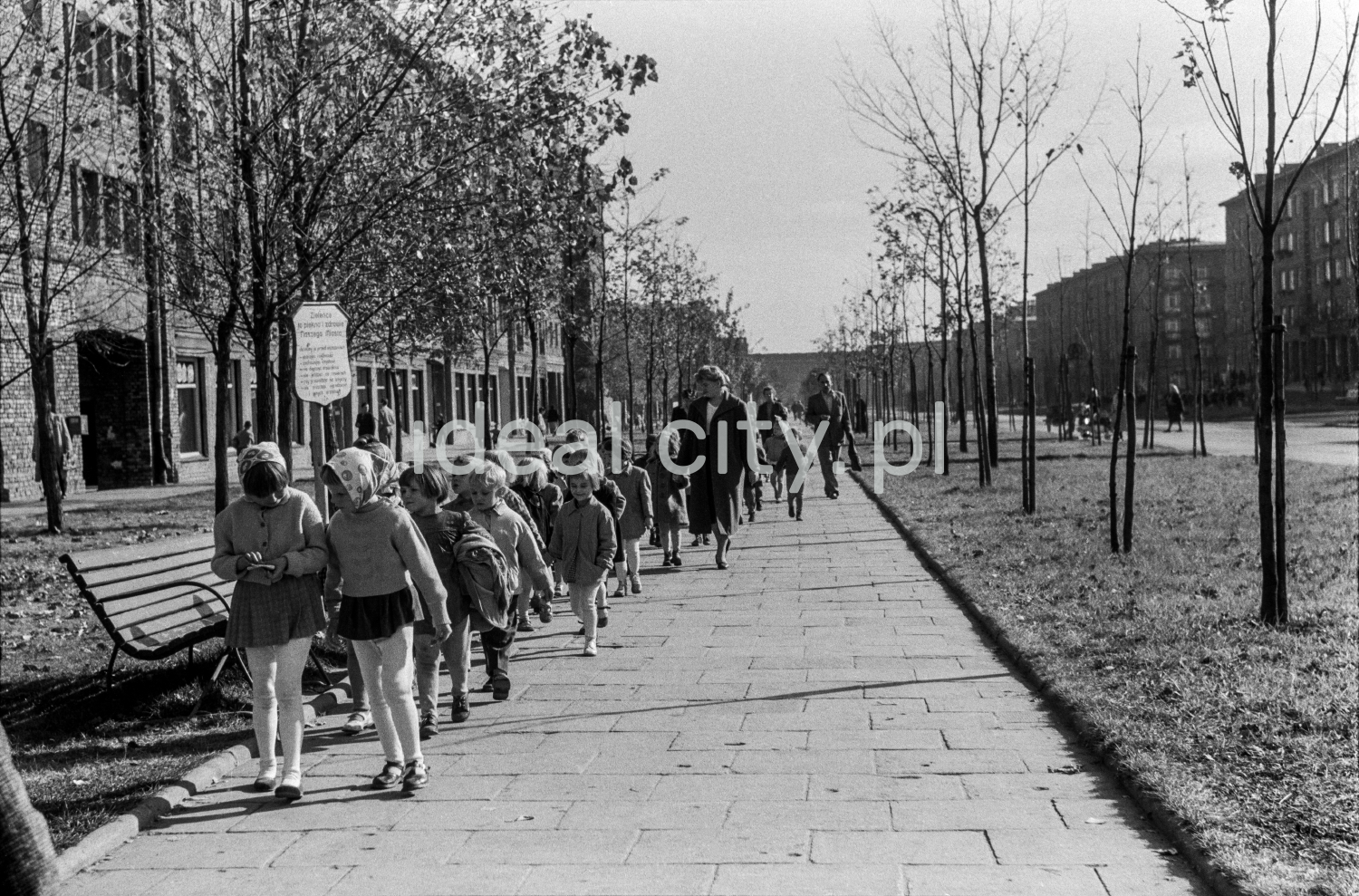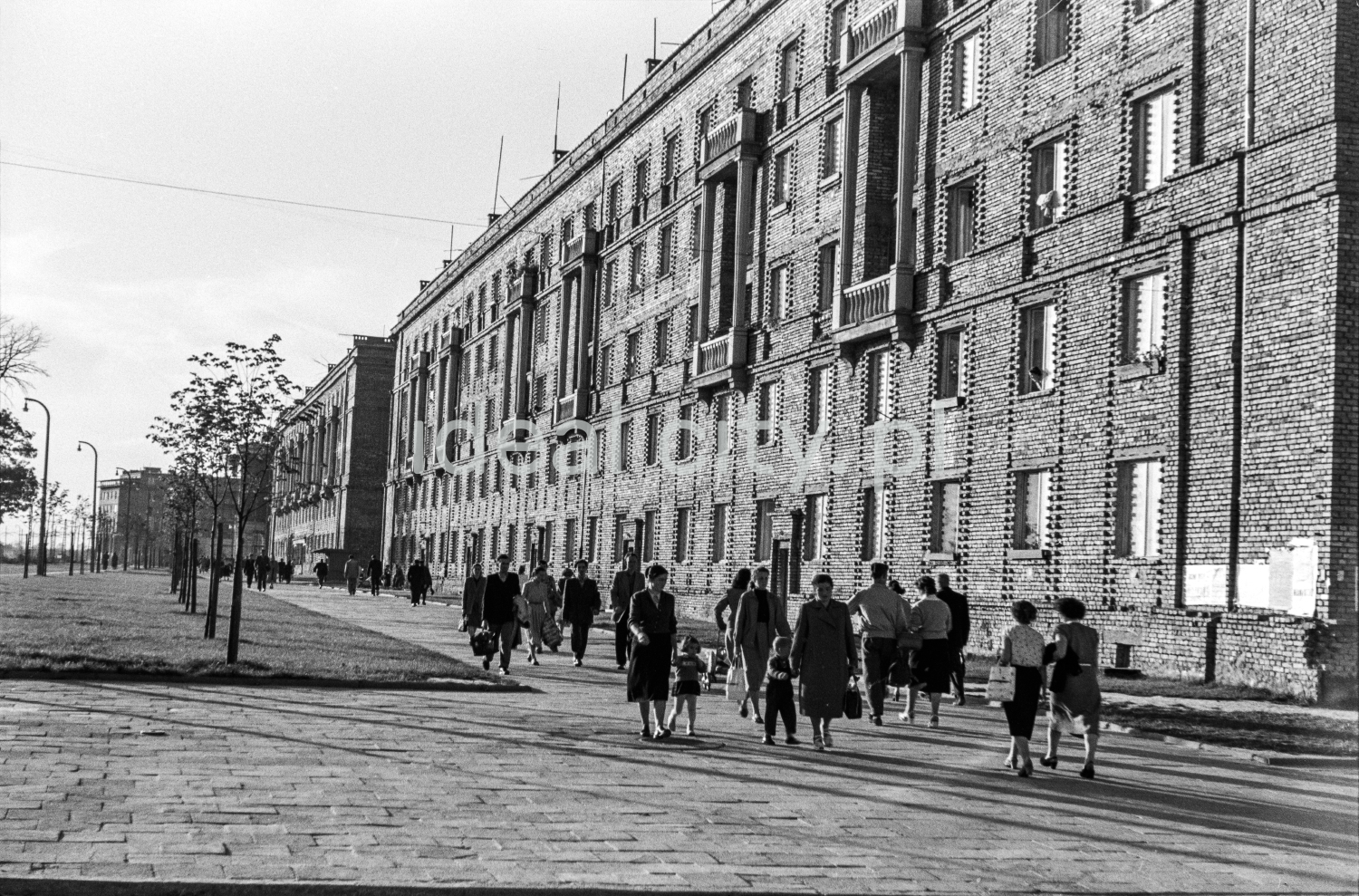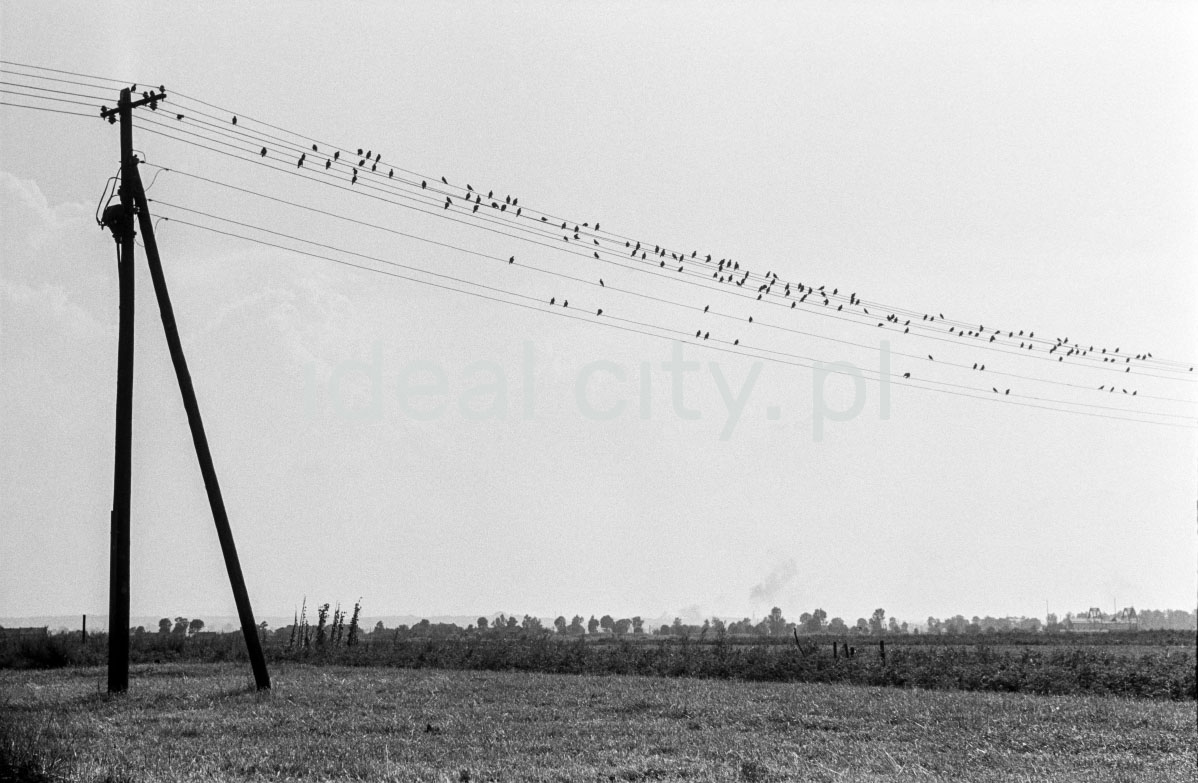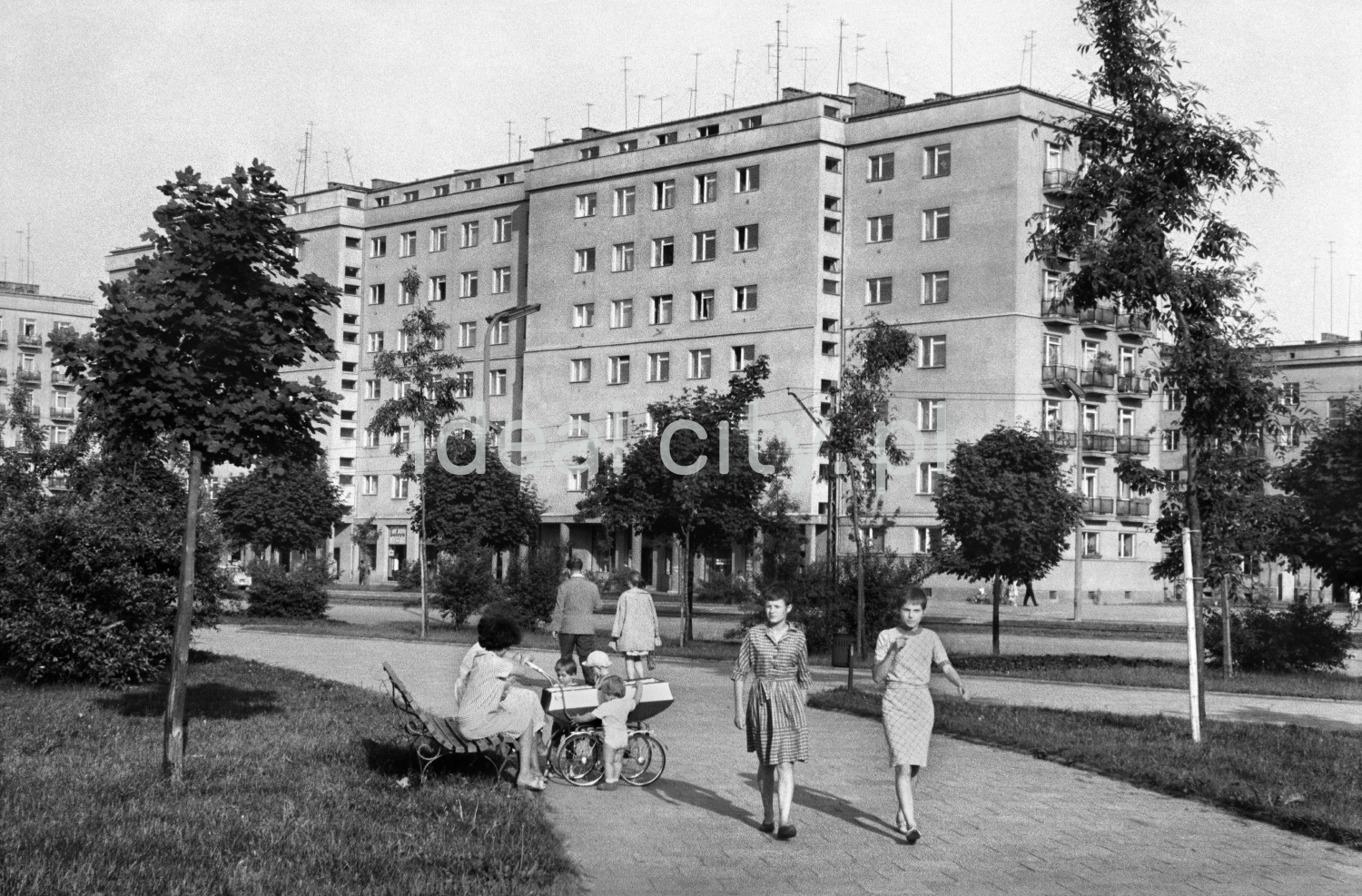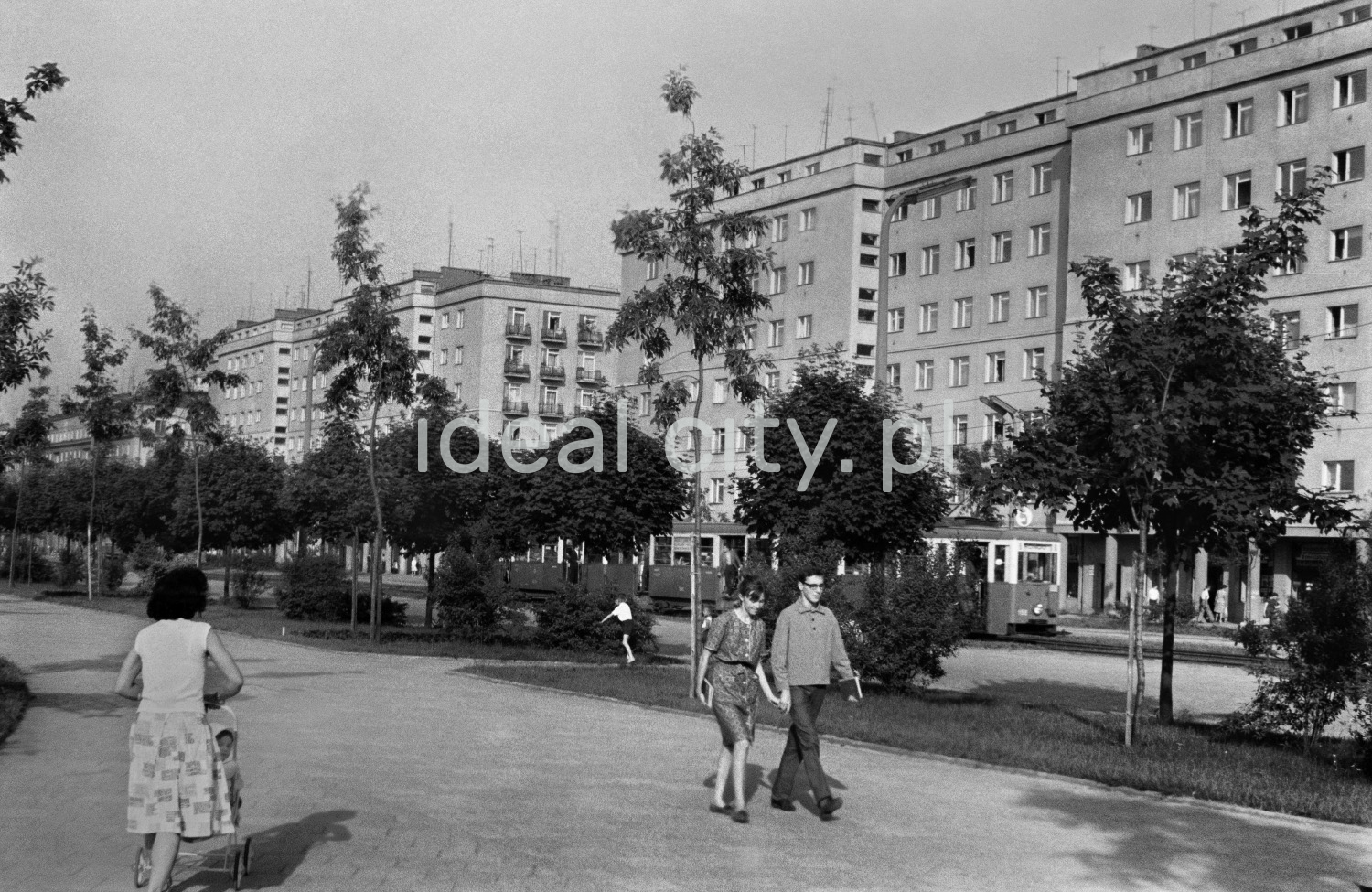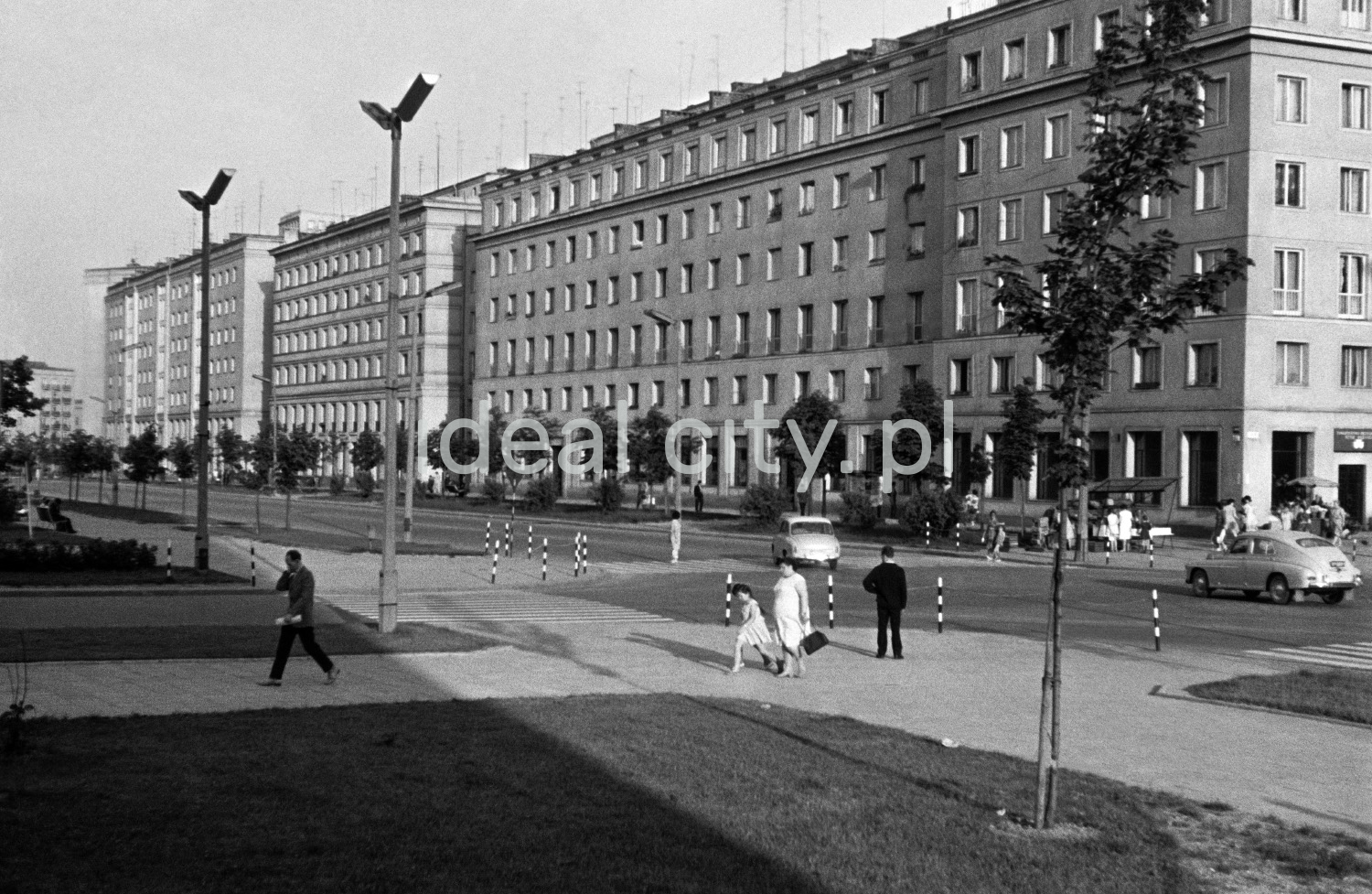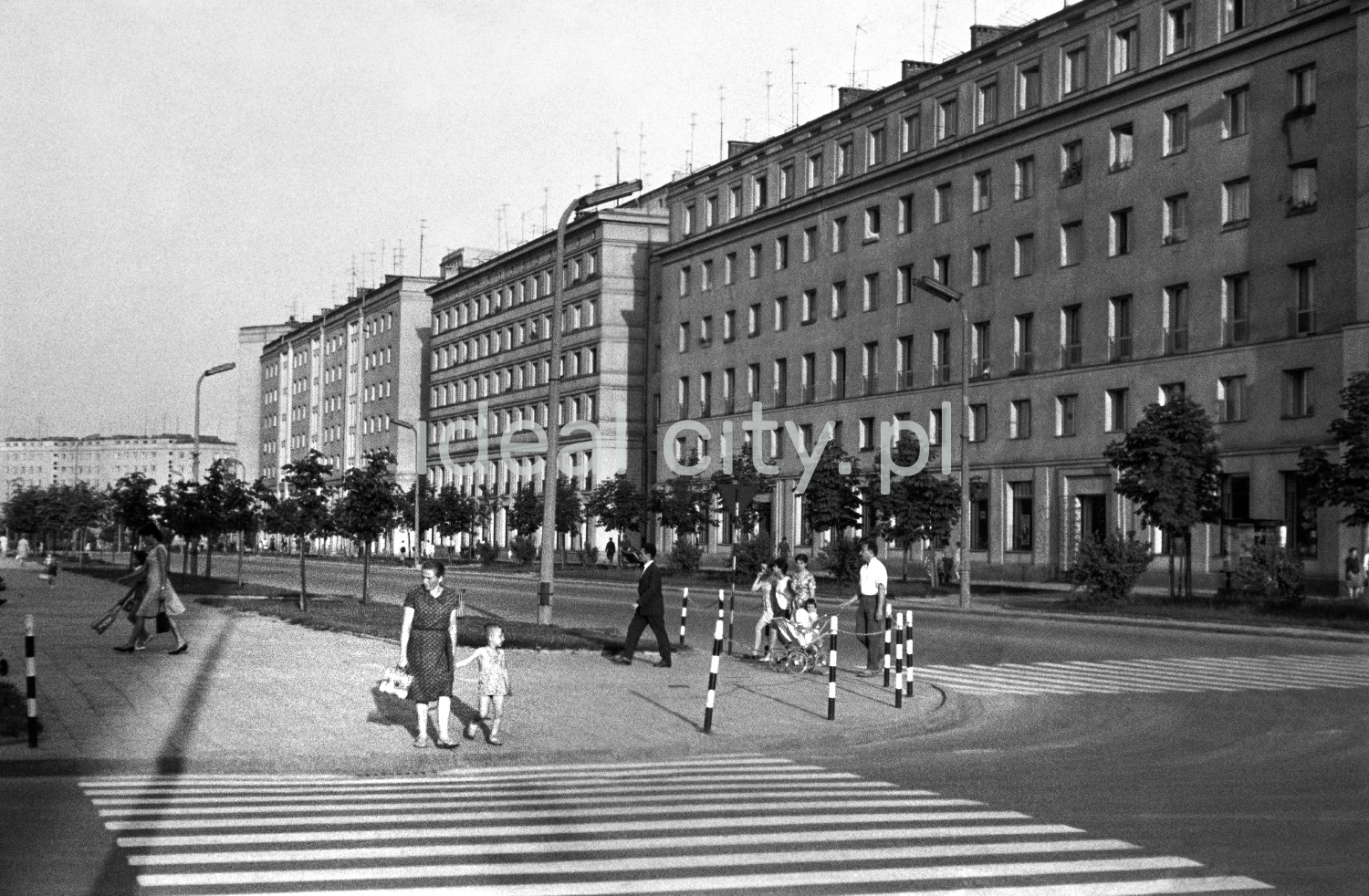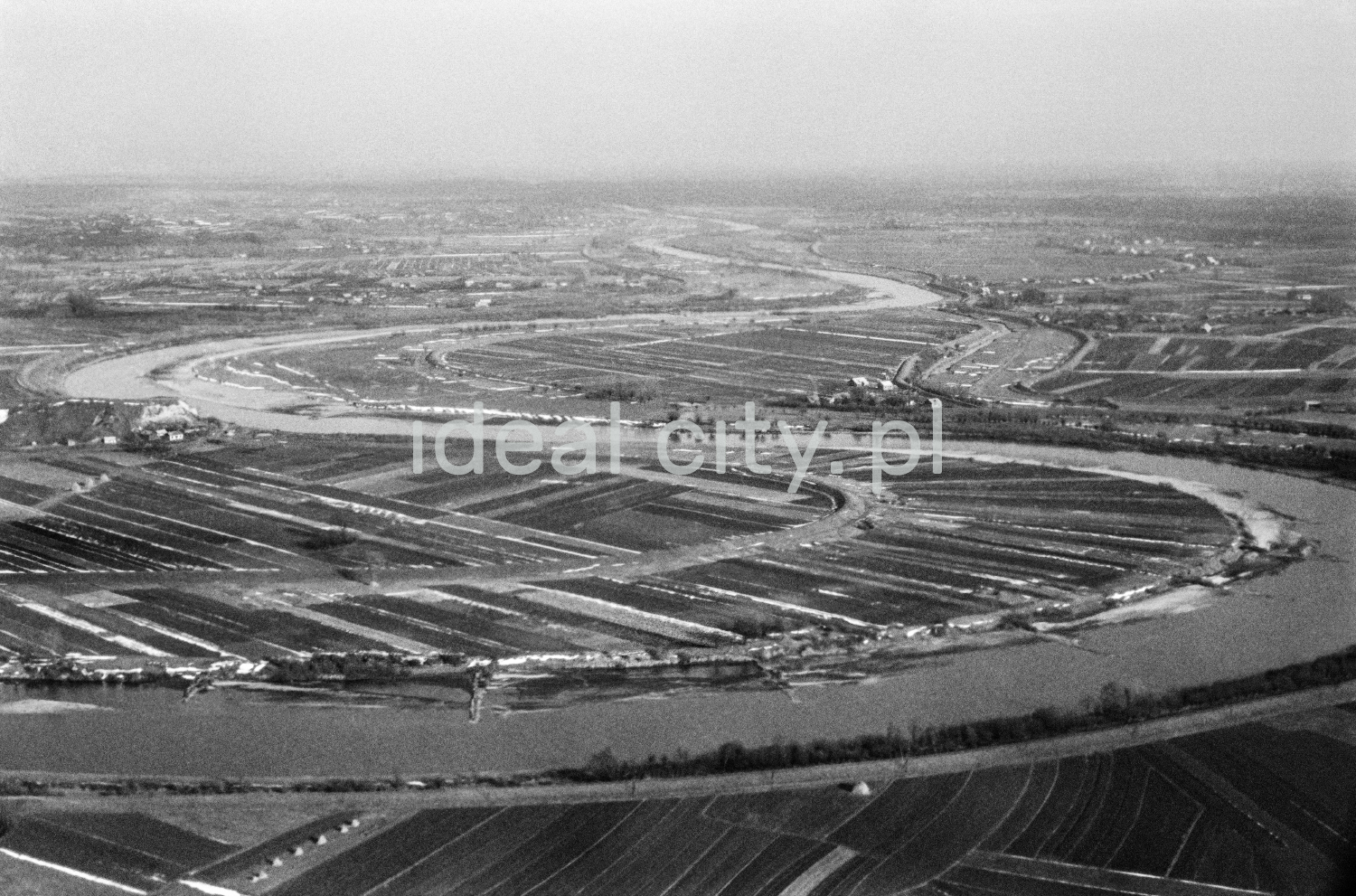A DRIFTING GLOSSARY
Author’s Foreword
This text is a kind of glossary. The entries have been composed as micro-essays, a result of letting myself be carried away by the stream of associations related to Nowa Huta and beyond – to the modernist city. The author has been charged with the task of avoiding direct references, or even particular names directly connected with the subject matter. Hence the game of crypto-quotations, a sort of stream of cultural consciousness. The entries also constitute an attempt to give a literary form to memories, images, sounds, impressions, mostly sensual and emotional.
Drift
The Lexicon of Polish gives a number of meanings for the entry dryf [drift], but each of them is related to flowing movement, slow but relentless. This movement is not bounded by anybody’s will, it is the course of nature. It may describe ice floating on water, or a ship losing its way. Drift is also a word used to describe an ocean current. Last but not least, the word stands for vast masses of land, continents, moving unhurriedly but constantly, in a persistent journey around the globe. The numerous meanings of dryf provoke thoughts about what cannot be seen with the naked eye but goes on ceaselessly, transforms, recedes, floats away, vanishes. The world keeps moving, it is only that people are blind enough to believe in any sort of stability, motionlessness, and immortality.
Drifti is one of the key ideas advocated by Situationists. A dozen or so Parisian youths trusted in the power of imagination, and believed that every person could be an artist, or even that everyone actually was one. All it took was discontinuation of habitual attachment to daily life and renouncement of its spectacle – hypnotising coloured veils, tranquillising images, projections and simulations that grow around the reality of old capitalism. For Situationists, the city constituted an urban jungle with organically multiplying layers, independent from people, living a mysterious inner life. The complex urban body would not yield to systematic investigation. All one could do was float, drift, let the city carry one away, and get carried away in the city. And by drifting one set a line, a winding line, regardless of destination, by luck or the higher degree of necessity. One made a drawing using oneself as the pencil, moving within changing landscapes of buildings, squares, streets and shops, piercing through them with the line of the drift. One set one’s emotions and imagination going, abandoned to intuition and thoughts released from the ties of reason.
They drifted through winding, narrow lanes, easily blocked by the mobile architecture of revolt – barricades. We drift along broad streets. To link roofs with footbridges, to made the upper part of the city available to people – that was what Situationists wanted. To place library shelves in a square, and swings opposite an ice-cream stand that is open all year through – that is what we want. Unchained creative thinking and naïve usefulness, that is the different between their and our ideas. The objective seems to be identical, even if we do not realise it – to awaken ourselves and others from the stupor of daily life. Our voluminous roads that know no other lines than straight firmly reject zigzagging. They hold dominion over visibility and obviousness. They have been established for labourers not to lose their way to factories, or to programme their motion. Daily movements, planned from above, from home to work, school or nursery, shop or recreation areas expose the concept of residents as a mass that fills in the geometrical structure of the city, and – in the same way – fills in with its biological pulp the structure of life designed by someone else. Of course, this kind of dystopia is purely theoretical. Life follows its own course. In our city, it has created new passages regardless of established routes, via lawns and streets, it has planted make-do gardens right outside the window, and hung washing in front of blocks of flats. These small but common manifestations of insubordination with respect to the imposed order are as significant as huge political demonstrations.
The regular network of streets in our city has not been designed for spontaneous gatherings, but for propagandist parades. Not for freedom’s sake, but to control. In a totalitarian world free drift around the city does not exist. Streets, squares and pavements lack dark places, niches, or nooks. There is no place to hide, everything happens on view, and neighbours play the role of guards. They watch each other. In the light of this, the monument to the revolutionary leader in the central square of the city, the focal point of the starry street layout, is the main guard and supervisor of the system. No wonder some people tried to blow him up. Fruitless though it was, the attempt would not have fallen short with Situationists.
It was with the intention to outfox the educational system that the school type of drift was developed. A group of students wished to outsmart the system. They told stories diverting attention, a digression of their choice. Many of us loved Edmund Niziurski’s Sposób na Alcybiadesa as children. It was in that book that the school type of drift was immortalised. Students came up with a technique they called SPONA, which they used to distract the teacher’s attention from subjects they did not like. How to make the impression of being a knowledgeable person without studying? It is enough to force your teacher to drift, to get him fully absorbed in a story completely divorced from the subject matter, a story that makes the whole world disappear, that makes the teacher forget of his duty to oppress students?
To stroll around the city, and to see the trip as a story with no beginning and no end. To keep wandering aimlessly, making circles, to amble. Today, drift has become an indulgence. Young people cannot afford it, elderly people either, not even the homeless. Who has the time for aimlessness today? In the meantime between tasks, between jobs. Drift cannot be planned, it cannot be turned into a project. Only those who are free, who have a helluva time on their hands can afford to drift. The task for the coming weekend: discover invisible connections between things, right where you are, in the city.
i The English term for Situationist ‘drift’ is actually dérive, taken from Guy Debord’s Theory of the Dérive.
Countryside
The country is not the opposite of the city. The days of rigid divisions, clear-cut boundaries, inflexible definitions are gone. They used to be each other’s negative alter egos, each other’s shadows, one a shameful reverse of the other. One was to be desired, the other caused ridicule. All those anecdotes about hens kept on balconies, sheaves used as doorstoppers, or cousins from the country paying visits in a neat flat with a TV set, a wall unit, and sanitation facilities such as a toilet or tap water. A great number of them were related around Poland only thirty years ago. The country was something to be ashamed of. Admittedly, there was also another kind of non-city, the village – transported straight from bucolic tales, the fantasmatic outcome of post-Nobility fantasies nourished by Polish intelligentsia. The village where villagers do not bark in roadside ditches, whose foundation stone was Roman pastoral, transplanted into Old Polish by poet Jan Kochanowski in a way which shows a real genius. Paraphrasing this hypnotic language, rural leisure and benefits can be taken into consideration by the one “who lives amid thy care / In life is just, in dealings fair; / His pious efforts on him rain / Abundant, honourable gain.”i
On the one hand, the countryside mirrors human dreams of power over submissive nature; on the other – it is full of ugliness, mud, stupidity, backwardness, it stirs up disgust, rejection, revulsion. It is closer to animals than to humans. Classical topoi obliterate what we in Poland tend to reject, the very matter that constitutes us and shapes our culture: the shame at several centuries of peasants’ slavery, their deprivation, as well as the great hunger for social advancement. Andrzej Leder’s book Prześniona rewolucja [Sleepwalking through the Revolution] discusses exactly this kind of blend comprising wishful thinking, events, and common emotions, grounded mostly in the memory built up throughout previous generations that constitutes the legacy left to us. Leder’s work, despite its numerous generations (for instance, the use of the concept of revolution), shows good intuition. The “revolution which we have sleepwalked through” relates to the radical reorganisation of the social structure in Poland that happened after the Second World War. The revolution was to hit this structure with the force of a cataclysm, transforming it irrevocably. A large part of Polish society benefited from it, the part that had never called for a revolution.
It was once possible to tell a country person from an urban dweller by their speech, appearance, and behaviour. The countryside used to be a separate organism with its own social structure, and its own time measured by field work, with its own way of life. Today, it is merely vast outskirts. There are cars in driveways, trees have been removed from homesteads, mud in yards have been concreted over, conifers have been planted, decorative remote control gates installed, necessarily bearing a sign saying: “Private property, no trespassing,” or “Warning! Good dog, it bites.” But neatly trimmed lawns conceal layers of dirt.
An exchange of roles has happened: city people long for nature and care for healthy food, while country people consume what is cheap and easy: milk from a carton, bread from a plastic bag, tomatoes from the discount chain Biedronka. The popularity of allotments in the city is on the increase, social gardens keep appearing, new forms of garden activism develop. Country people spent their time watching TV, abandoned fields are overgrown by weeds. The city keeps spreading, and appropriating surrounding spaces. Towns and villages borrow urban forms: suburban villas with the favourite motif of the Polish nouveau riche: a porch and a colonnade, estates of terraced houses and blocks, thrown deep into the interior, unrelated to cities. Blocks of flats in a field are not a rare view, with some remaining beetroot or cereal fields around it. Or meadows with grasses gently moving in the wind. The element of naturalisation cannot be obliterated. Blocks become a natural phenomenon, like giant rocks that suddenly outcrop in a flat region.
i J. Kochanowski, “Saint John’s Eve”, trans. by Marjorie Beatrice Peacock.
Skansen – Open-Air Museum
The point at which history is halted at skansen is the moment when modernisation came to the countryside. This unique kind of museum takes somebody else’s life as its subject matter, recreating its environment in great detail, including the inside and outside of houses and the entire landscape around it, places of work, education, and family life. It does not contain, as far as I know, tractors, nor have I seen too many bikes there, not to mention telephones or TV sets. Skansen provides a 3D picture of a life that is long gone, a life abstracted from non-continuity, inconsistency, anachronisms, but also things that are ahead of their time. A skansen exposition requires a life that has been mummified and purified, and the open-air museum displays what no longer is. And this exactly seems to be the prerequisite of its existence: demonstrating that people do not live like this anymore. And thus, on the one hand, it keeps up the pretence of authenticity, as though the smith just left the smithy, as though the housewife just beat eiderdowns. Only a thin layer of dust has covered them. On the other hand, this orthodox reconstruction produces a weird impression, making one want to throw a plastic bottle against the earthen floor to enliven the place which has been made lifeless. A modern piece of rubbish puts some blood into this soulless place, being a result of an action that is spontaneous, that introduces change, contrast, movement.
What if we made an urban skansen? A skansen covering an area full of blocks of flats. Does this sound like a hilarious idea? Let us do this brain exercise. Let us choose a limit for contemporaneity. 1989 seems right to me. Now, we select houses consistent with the era, in this case – concrete blocks. Prefabricated elements or bricks. They are no longer new. They were built forty years ago, before the time limit we have set. Not high, merely four or six storeys. Covered with graffiti, but the letters have been meticulously painted over so that all we can see are traces, dark patches. Indication of political censorship or marking the area by hooligan football fans? In 1989 everybody knew; it could only be politics back then. Painting slogans over never helped actually. The war waged on the walls promoted expression of political resistance. The more obliterated the inscription, the better it was remembered. This is the very moment to which I would continue the display. The moment when residents of those blocks still had a fetish for Western packaging. For us it acted as a substitute for Western culture, alluring us with wealth and the standard of living. These empty bottles, cans, and boxes appeared like things of beauty to us. We would arrange them on shelves as decorations. The urban skansen would have its own work of art, commemorating this habit – Janek Simon’s cycle Cracovians Like It Clean. If there ever has been a sarcastic piece, this is the one. Empty bags and boxes that used to hold crisps or cleaning supplies have been arranged to repeat the shapes of ancient pyramids, medieval churches, or classicist palaces. Simon uses them to build nativity scenes, inspired by the ongoing (resuscitated by annual competitions) tradition of urban folklore: Kraków szopkas (cribs). Aside from the cribs, his structures also reflect social realist buildings with their overblown references to historical architecture: arcades, attics, or towers. Pathetic cathedrals of modernity, dwarfed palaces of culture. So, the period covered by our skansen includes daily life when people traded from mobile stalls, and mostly camp beds. In the early 1980s they also bore such pyramids – made of Danone yoghurts or bars of Milka chocolates.
The museum would surely benefit from a reconstruction of a small fragment of the city with preserved urban design. For instance, a unit of four blocks of flats surrounding a square and a playground, carefully transported to our skansen from an authentic location. It is only when we are in the square that we realise the smartness of this design. The residents know everything about each other: through the windows they could supervise not only their children on squeaky swings, but also their neighbours as they left or came back home. Besides the blocks, in one of the corners there is the concrete cube of a kindergarten, stretching out of the unit. On the ground floor of one of the blocks, on the side opposite to the one facing the square, there is a grocery shop PSS Społem, as well as a few other shops. A hair salon for women, men and children, and a glazier’s workshop. The longer wall of this block used to adjoin the street. To make things easier, there is an arch-like monumental passage in the middle of it, adding a touch of the grandeur of a palace to the ordinary building.
We are now in the flat open to visitors, with sofa beds, a TV set, and a wall unit. A carpet, crystal glassware, and a straw mat on the wall, serving as background for picture postcards displaying views from Bulgaria. And a calendar with a picture of Pope on the kitchen wall. High gloss furniture, even though well cared for, is clearly worn-out with stains and scratches. But even so, entirely different from today’s disposable poor-quality furniture! These days, if we grow weary of a piece of furniture, we dispose of it. People working in skansens represent disappearing styles of life: a student, an old-age pensioner, and uncle Zbyszek, who never leaves his garage where he runs a workshop. The student and the OAP from whom he rents a room pretend to each other that they have never heard of Raskolnikov. The OAP grows flowers on a piece of the lawn by the entrance to the block: common marigolds, yellow like scrambled eggs. The next block has been disassembled so that we can see how it is constructed: bricks and prefabricated components. Nearby, a model kitchen with all necessary equipment, and a bathroom with a white bath and taps reflecting sunrays.
The skansen’s objective would be to demonstrate how houses shapes people and their lives, and well-prepared guides would be there to make that clear. There are house curators in our museum, wearing clothes like the people who lived in those flats used to wear, and doing things they used to do, such as watching one of the two TV channels, washing in the Frania washing machine, or doing DIY jobs. The block estate conveys the message: “you are not special,” you only matter as part of a greater whole. And that is the moral of this exposition.
The Horizon
In the city, the horizon disappears. Away from the city – whose limits blur and become watery and nondescript, pouring over vast territories that unite the city and the countryside into a new featureless creation – in open space, the horizon still exists and is doing well, but not here. The look gets bogged down in concrete walls. Concrete, hardly pleasing to look at or to touch, absorbs light. It is heavy; it takes the heaviness of the reality away, it takes the shadow away. It is like a local black hole. In a world that strives towards blackness – or, perhaps, dispersing in greyness, the search for the horizon seems an impossible dream. Between blocks there are more blocks, and still more behind them, and behind those that are behind. And so it goes on.
Those city dwellers who have seen foreign lands on the Internet or have recently returned from some outside world may be trying to find the horizon until they are forced to admit defeat. The perspective created by the connection of the sky and the earth is not here. You will not be able to find a place of your own here, under the sky, securely grounded. The horizontal connection line, which is not a line of division, suggests to us that there is something out there – something beyond it. Changing perspective to the bird’s-eye view is not an escape, but choosing the only possible option to move from being a piece in a jigsaw puzzle or a cog in a machine to occupying the position of at least a conscious observer. This is one thing. On the other hand, it is only from a certain height that you can capture with your eyes (and with your mind) the labyrinth of the city as a whole, and it is willing to reveal its design and composition. From the vertical distance it is even more conspicuous that the city is governed by geometry, and it is geometry that governs the lives of its residents. The number of forms is limitless: people spend their lives in squares and rectangles. They are born and die within geometric shapes. Between the rectangle of birth and the rectangle of death there is a world of winding, broken or straight lines – paths of individual lives.
Regularity is not human. Quadrangles are subordinated to the circle. The city revolves around its central point, quiet as the eye of a cyclone. It is not moving, but it organises movement; it coerces and orders circular and centripetal movement, stupefying like a treadmill. Streets surrounding the central square like sunrays were supposed to discipline wandering residents who look like ants busy with irrelevant matters from above. Ray-like alleys are channels meant to accommodate human masses, living and working here, during the day. Regularity failed, however, cruel modernist beauty originating in Greece has vanished with its symmetry, eurhythmy, and harmony. Unexpectedly, the horizon appears in the very middle of the city. Its line is exactly where the centralist order has broken down. Through the missing frontage of the square you can see meadows by the river. People live in the cage of geometry, but its door is broken.
When Ewa Zarzycka walked around the market square in Drohobycz, her steps commemorated a mathematical shape totally unconnected with dictatorship, enslavement, or power. The square place gave her a moment of peace, but also a promise of reaching something old but living, even of the pulse was hardly palpable. Zarzycka heard it anyway. Drohobycz opened her eyes to a deeper and more ethereal level of its existence whose language was geometry completely unlike the authoritarian order of our city. The square, the very basis of Drohobycz’s persistence in time, the foundation and condition of the existence of the town at the foot of the Carpathian Mountains, remained intact under the stone covering the market square and a sea of mud. It did not take a lot to recognise its significance – just a walk round the place. Ewa Zarzycka was strolling leisurely around the bumpy square with traces of past grandeur, situated upon a hill, under light, faded skies. She followed more subtle indications of another city which was growing on the genuine one. Little could be said about this frail and transparent creation. It could only be watched gingerly not to harm the details quivering in the air of the structure.
In our city, the square was the sun that shone upon all corners and “saw” them all. It was the brain in a network whose urban fabric was supposed to encumber residents. Their relatively comfortable homes, though without balconies, which they received for settling here, were covered with greenery over time. Plants, as they tend to do, softened the inhuman rigour of architecture. Today, our city is a garden city where life goes on more slowly than elsewhere, old-age pensioners play chess, children come from school on their own, mothers push prams, shops sell cheap second-hand clothes, and its cultural offer includes two real theatres, two museums and two art galleries suiting rather traditional tastes. A graduation tower was burnt down here not long ago.
City Drift II
I am in a building, in the corridor. Soon I know – these are not corridors, but narrow and graceful arcades. Weird architecture: I am neither inside nor outside. I am walking beneath barrel vaults that seem endless. They run along some buildings and, as far as I can see, along multi-lane roads, so broad that even heavy traffic is hardly noticeable. The arcades are not lit. I do not know what time of day it is. I can see the lights of cars passing by, reflected by asphalt. The arcades are like some dingy subterranean tunnels, rather than an elegant passage. I wonder where they lead to, and then Bologna comes to my mind and the fact that the road to a church on a hill was entirely hidden by such arcades in this Italian city. How pleasant! You do not have to change when you leave, or take an umbrella, you can feel sort of… private. The way to the church was not built for the sake of residents, but for religious reasons: people walked along it on their keens. But where I am no church is in view. It is snowing in my dream, I smell humidity. Where is some light? I can see no lighter spot, the end of the corridor is in darkness! Does this mean there is no way out? For some reason, I consider no escape, no stepping aside from the arcades into the road and abandoning this game, even if I were to be run over by a car. I am facing a problem, and I know I am dreaming but I cannot leave this dream. And this is actually wearing me out: something has to be done although all this seems outright fictitious. I look around: I can see nothing. Driving rain in the street, and a wall on the other side, some shop windows, padlocks on doors… I walk faster, I breathe faster. I am running. I can hear the sound of feet hitting the pavement. Is this me?
Click. There is light. I am walking down the pavement now. It is broad and stretches out in front of me. The sun is shining brightly, but its rays fail to reach me, captured by tree leaves. There is a park to my right. Trees are casting long shadows on the asphalt which has almost turned to ash in the heat. No other people in sight. The city is empty, I can see no passengers in the busses that pass me. I am in a hurry, and more and more certain that I will not make it. I do not know why such rush. I cross an intersection, and trip over the curb. I feel dizzy, there is far too much light. I am walking along a building, mirror-like shop windows reflect white paving slabs. Unexpectedly, the pavement begins to move, making me run. I have to jump over puddles, abandoned toys, food rests. I dash past some kids loitering on the way from school. Have I knocked over one of them? I do not look back, but I can hear the sound of a fall and the echo in the empty street.
Drifting in a style of her own, Ewa Zarzycka wandered around Wrocław and took photographs. Her eyes slid over walls with peeling paints, traffic signs, and all those things you find in the streets: cables, manhole covers, plaques, inscriptions, the urban iconosphere of the middle Polish People’s Republic, without lingering on anything. The picturesque character of the old urban fabric did not catch her attention, either. The city rolled before her eyes like a strip of celluloid film with its consecutive frames, like a slide show intermingling images of streets with frozen encounters, artistic actions and other, more or less important, scenes. She was attracted by pictures recording spontaneously created linguistic systems of the streets, meaningful arrangements. She was interested in computerless coding, in an era when analogue communication media were still enjoying their height, but harbingers of their upcoming end were already appearing on the horizon. Disorganised systems of signs which she noticed in the streets seemed more convincing than intentional messages. The artist recorded these signs and the visual texts they formed in a typically contrarian manner. They included, for instance, patterns of tram wires against the sky, framed by edges of the roofs of neighbouring houses. There was no point in decoding urban hieroglyphs or paying too much attention to them. They were a product of a sharp eye and a light-hearted attitude towards the Wrocław modernity of the time: the photo-medialism of the 1970s. An additional result was the tale of a city whose historical messages remain unread, because nobody wants to read them, is capable of doing that, has necessary instruments or is ready to decipher them. Lesson of a Dead Language – to use the title of a book about visible traces of the past of an empire.
Krzysztof Maniak’s drift began in a period of advanced computer science. Maniak is a digital native. This is probably why he did not feel compelled to analyse the results of the major breakthrough for civilisation, brought about by digitalisation. Familiar with various virtual worlds since he was a child, he failed to be excited by them; on the contrary, he wished to touch the analogue life with all its trash and imperfections. While it was still possible. He stepped off the usual track, and chose a path of his own. He turned to nature. Forest. He began to wander around overgrown bits of wasteland, valleys, allotments. He cut his way through lush sloe bushes, struggled through grasses, got stung by nettles. He abandoned the mediated for the direct. He exchange the overabundance of images and information we keep receiving from the contemporary world for an artistic ascesis, opting for what was perfect, simple, and economical. His trips are like active meditation. He ventures into marginal places, undefined, borders between cities and the countryside where nature attempts to emancipate itself from human domination, at least for the slightest extent. He uses the city to practise the choreography of passing through tangled and thorny twigs.
Washing Lines on the Lawn
There are hardly any fences here. It takes some effort to find them, small barriers around a lawn or a flower bed. Densely covering the city area, districts constitute a hurdle which it is difficult to overcome, blocks tend to surround a residential unit, a small neighbourhood, hiding the patio with their bulks: a playground, lawns shining with washing, waste bins in concrete sheds covered by Virginia creeper. Actually, the question of washing is rather intriguing. People who kept flowing in from the 1950s adapted architectural and urban solutions to their needs. Buildings here tend to be solidly constructed and without balconies. This is by no means a minor problem. We still remember avant-garde pre- and post-war architectural designs with shared kitchens and other rooms, dedicated to integration of residents. They failed to achieve popularity, and were rejected by those lucky ones who had the chance to live in, for instance, the “mother of all blocks of flats,” Le Corbusier’s Unité d’Habitation in Marseille. The idea to force inhabitants to form communities proved hugely unsuccessful in people’s democracies. In the USSR, families sharing common flats were monitoring one another 24/7. There is no need for secret police in a country whose citizens inform on each other. Communal apartments provided a convenient instrument of control. Did the creators of our city intend to make its residents to spend time together in front of the buildings? Gossiping while hanging out washing? In this case, it was people themselves that came up with the idea for catering for the needs architecture neglected. Had designers asked housewives what they preferred, they would surely have picked lawns with clothes horses on them, rather than pseudo-palace architecture found in the estates, totally inappropriate for the function they were supposed to fulfil. For example, stylish staircases leading to terrace with balustrades, and then to a shop selling car parts.
Krzysztof Maniak found a way into the city which, regardless of its broad streets and countless benches seems indifferent to visitors. Why? Because of its vastness. There is too much space here and there is no… stuffiness, the foul-smelling cosiness of old cities. Maniak intrudes into landscape, and he does this by using tramways. Yes, tramways (I wonder if he was inspired by the character played by Bohdan Łazuka in I Hate Mondays). He covered the cult route 10, from Łagiewniki to Pleszów, and he used the rails like he would use a safety float line in a pool. If you move along them, they will show you the way should you get lost, or have a panic attack. For the artist, the rails are a living drawing, a line running through changing landscape, not really dividing it but sliding into urban space deeper and deeper. They are like a piece of string onto which he threads whatever he finds – views of less known areas of the city, by the tramway going through a tunnel of tress (by the industrial combine), by meadows, allotments, storehouses, and wastelands.
Landscapes are not discovered from a distance; in order to get to know a landscape, one has to enter it. Maniak does his best not to stand out from his surroundings, to become part of it. This is not what people usually do, they tend to wear clothes in colours that clash with the landscape, they tend to be hyperactive, noisy, and untidy. Maniak is different. The less is visible, the better; the more successful his mimicry, the better the work; silence, quiet, thoughtfulness – these are what the artist is after. The principle behind his attitude sees human beings as complementary components, equal to leaves of grass, trees, nettles, benches, or fences, and not a shadow hanging over the scene, a spectre of destruction.
